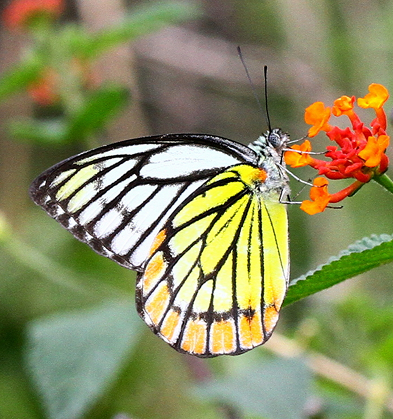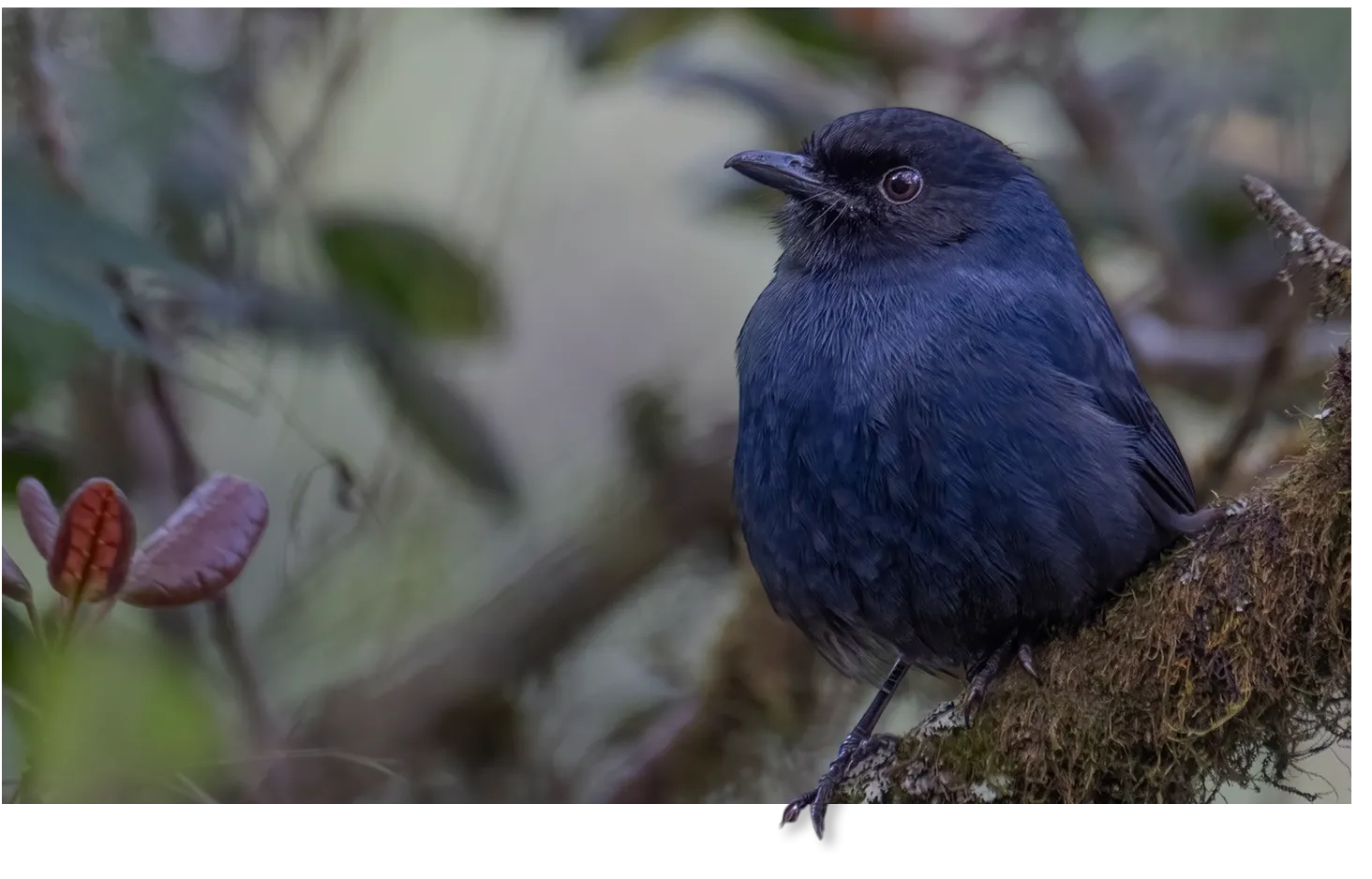
Sri Lanka
Explore the natural and cultural heritage of Sri Lanka — a tropical island alive with endemic birds, rare mammals, vibrant marine life, and ancient history. From rainforests to coral reefs, it’s a true paradise for wildlife lovers and nature travelers.
Sri Lanka: Where Ancient History Meets Wild Wonder.
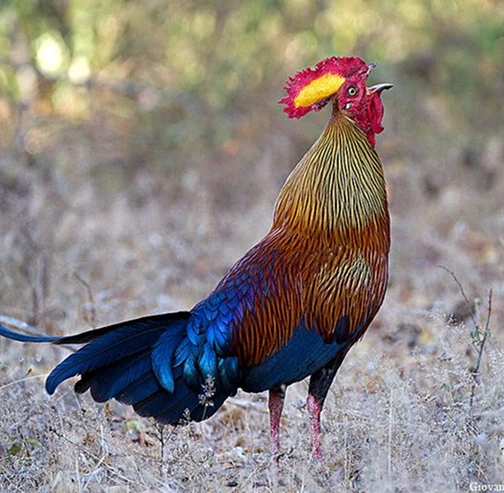
When Prince Vijaya arrived on these golden shores 2,600 years ago, he discovered paradise. Today, walk these same paths and spot the colorful Sri Lanka Junglefowl – our national bird – its golden neck gleaming in the sunlight. Nearby, spotted deer move silently through Wilpattu’s ancient forests while curious purple-faced monkeys watch from above.
Did You Know – The Sri Lanka Junglefowl is believed to be the main ancestor of all domestic chickens worldwide!
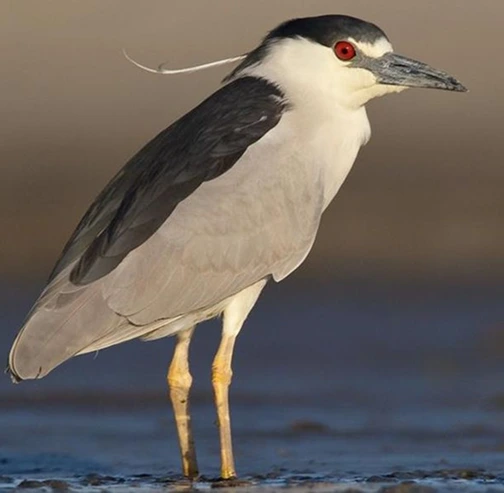
Marvel at Anuradhapura’s massive reservoirs – engineering wonders created 2,400 years ago that still function today! These tanks form one of the world’s earliest complex irrigation systems, nourishing emerald rice fields that stretch to the horizon. At sunrise, rare Black-crowned Night Herons hunt in the Twin Ponds (Kuttam Pokuna), the same waters where ancient kings once bathed.
Local Tip : Visit at dawn when the rising sun turns the ancient dagobas golden and the wildlife is most active.
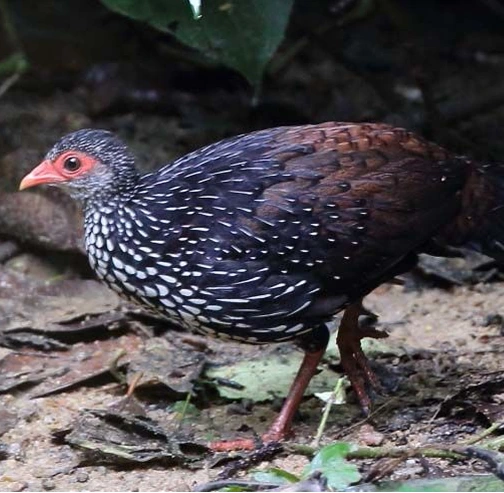
Buddhism transformed the island forever. Monks became guardians of both faith and forests, creating a unique blend of spiritual and natural preservation. Hidden in the undergrowth, the secretive Sri Lanka Spurfowl moves like a shadow – so elusive that many leave without seeing it. Ancient stone pathways wind through pristine forests, protected for over two millennia by Buddhist beliefs.
Wellness Secret : Many traditional Ayurvedic treatments still use the same healing plants that grow around these ancient monasteries.
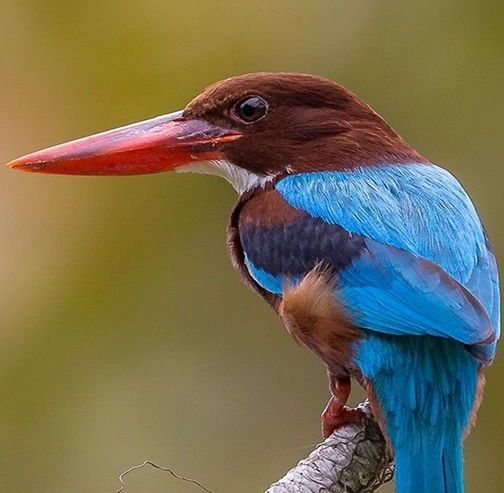
At Polonnaruwa, morning mist dances across the vast Parakrama Samudra reservoir, reflecting both ancient temples and diving Spot-billed Pelicans. The magnificent Gal Vihara Buddha statues, masterpieces of stone carving, watch over landscapes unchanged for centuries as brilliant blue kingfishers flash above the water.
Archaeological fact : The reclining Buddha at Gal Vihara measures 14 meters long and was carved from a single granite boulder!
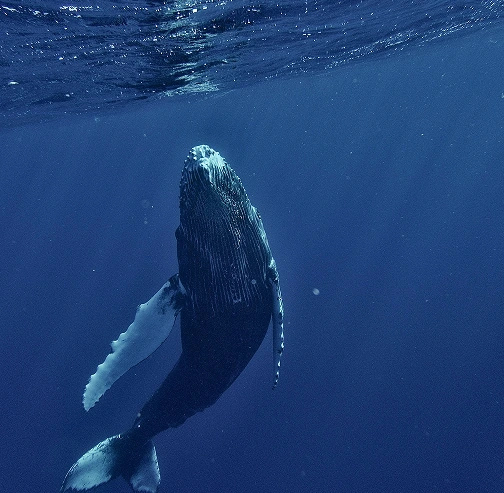
The Portuguese came searching for spices but discovered an island treasure. From the same golden beaches where they landed, today you might witness Earth’s largest creature – the magnificent Blue Whale – breaching against the horizon. Within the UNESCO-protected Galle Fort, narrow streets showcase colonial architecture beside fragrant cinnamon gardens where jewel-like sunbirds hover.
Ocean Magic : Sri Lanka is one of the few places on Earth where you can reliably see blue whales!
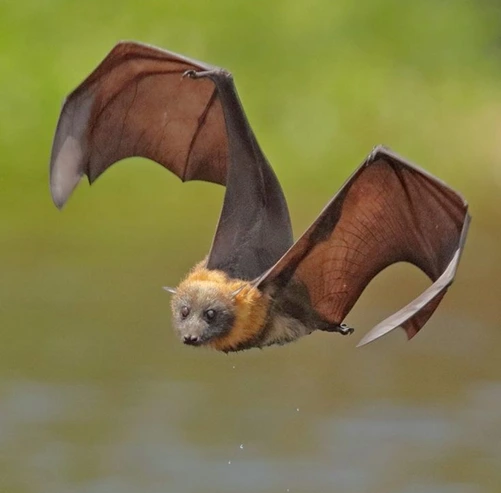
Glide through the Dutch-built canals of Muthurajawela, now Sri Lanka’s largest wetland sanctuary. Search for the perfectly camouflaged Black Bittern among the reeds while water monitors bask on sunny banks. As twilight approaches, flying foxes – with wingspans reaching 1.5 meters – take to the sky against a backdrop of flaming sunset colors.
Eco Adventure : Night kayaking reveals glowing waters, lit by bioluminescent plankton.
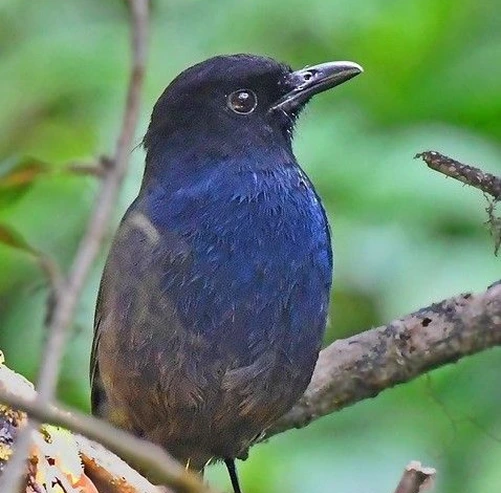
Journey through misty tea plantations established by the British, where the haunting song of the rare Sri Lanka Whistling Thrush echoes through remaining patches of cloud forest. Colonial buildings in Nuwara Eliya stand in striking contrast to the surrounding wild landscape, where crystal-clear streams create homes for species found nowhere else on Earth.
Tea Tradition : Pluck “two leaves and a bud” with local pickers, then sip fresh tea with mountain views.
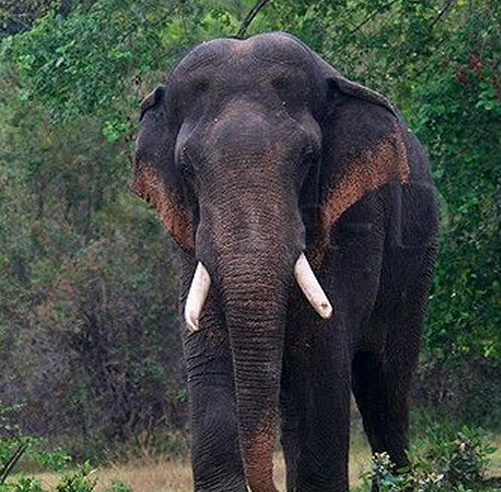
Independence brought renewed focus on preserving Sri Lanka’s natural treasures. Fresh pawprints of the island’s apex predator – the Sri Lankan leopard – mark jungle paths in Yala National Park, where these magnificent cats exist in the world’s highest density. Conservation efforts have protected nearly 15% of the island, creating wildlife viewing opportunities that rival anywhere on Earth.
Conservation Success : Sri Lankan elephant population has stabilized thanks to corridor projects connecting isolated habitats.
Feathers, Footprints, & Forest Whispers
Sri Lanka is a premier birdwatching destination, home to 33 endemic bird species found nowhere else in the world. These rare and beautiful birds, such as the Sri Lanka Junglefowl, Serendib Scops Owl, and Sri Lanka Blue Magpie, thrive in the island’s diverse habitats from tropical rainforests and misty cloud forests to highland plateaus. With its rich biodiversity and exceptional birdlife, Sri Lanka offers unforgettable experiences for birdwatchers, wildlife photographers, and eco-travelers seeking to explore the island’s unique endemic bird species in their natural environment.
Yellow-eared Bulbul
Pycnonotus penicillatus
Showcases unmistakable head decorations a blackish crown framed by striking yellow ear tufts and patches, complemented by delicate white tufts. Its olive-green upperparts flow into brown wings and tail, while vibrant yellow underparts carry a subtle olive tinge. These mountain specialists are strictly confined to elevations above 1000 meters, becoming truly abundant only above 1300 meters.
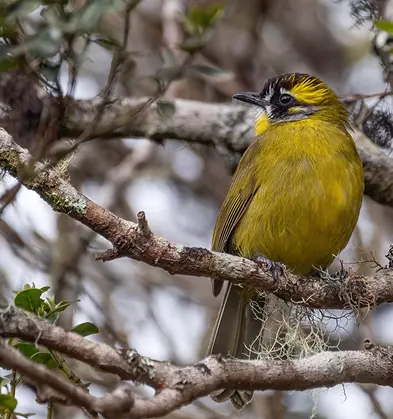
Sri Lanka Rufous Babbler
Turdoides rufescens
Instantly recognizable by its rufous (reddish-brown) plumage complemented by vibrant orange bill and legs. Highly social, these birds typically move in cohesive groups of 4-8 individuals through various vegetation layers. They play an important role as “leader species” in mixed-species foraging flocks, actively recruiting other birds through constant vocalizations. Find them throughout Sri Lanka’s wet zone forests from lowlands to the highest elevations.
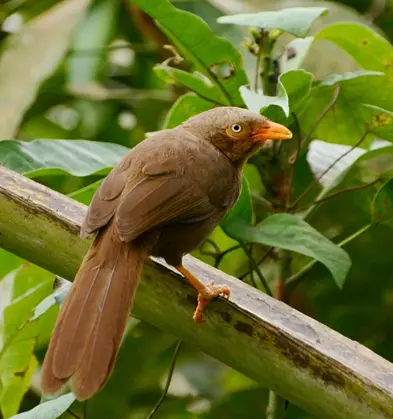
Sri Lanka Scaly Thrush
Zoothera imbricate
Distinguished by its distinctive scaly pattern across both upperparts and underparts. The olive-brown back contrasts with warm rufous-buff belly. Its unusually large, elongated bill makes identification straightforward despite its secretive nature. It primarily searches through leaf-litter for tiny animals on the forest floor.
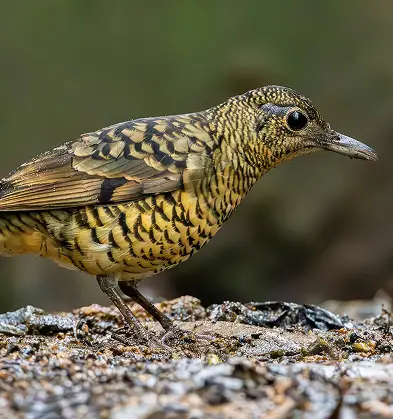
Layard's Parakeet
Psittacula calthropae
Captivates with its blue-grey head, vibrant green collar, and green underparts. Males show off coral-red bills while females display darker beaks and subtler colors. Their blue tails with yellow tips flash brilliantly during flight. Typically seen in devoted pairs or small groups, they communicate through melodious calls while searching for food. Your best chances to spot them are in wet zone forests and eastern hill slopes.
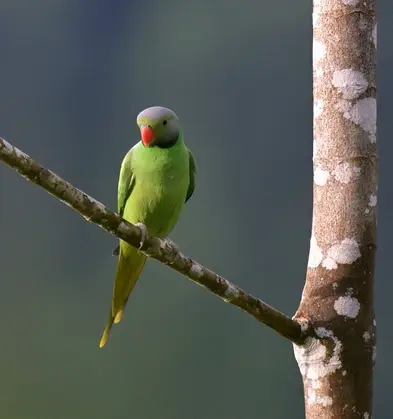
Sri Lankan Junglefowl
Gallus lafayettii
The national bird, brightens landscapes from coastal scrublands to misty mountain forests. The male’s spectacular orange-red feathers contrast with glossy purple-black wings, topped with a unique yellow-centered comb. Females blend into their surroundings with mottled brown feathers. Though naturally careful, these birds often become surprisingly approachable in protected areas. They play a vital role in spreading forest seeds, making them important beyond just their stunning beauty. Look for them throughout Sri Lanka, especially in mid-elevation forests with good undergrowth and water sources.
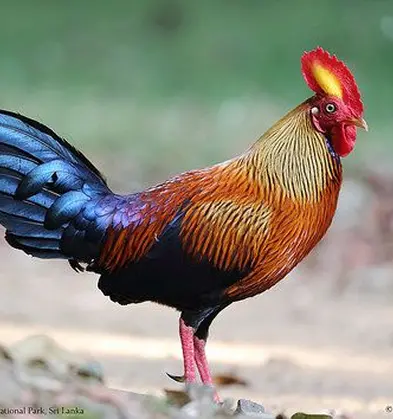
Sri Lanka Hanging Parrot
Loriculus beryllinus
Flashes through the forest canopy like a living emerald. Its brilliant green feathers with a crimson crown and striking red rump make even brief glimpses unforgettable. Most fascinating is how they sleep hanging upside-down like tiny bats! Listen for their high-pitched calls as they dart between flowering trees. Look for them throughout wet zone forests and well-wooded gardens up to 1,500 meters elevation.
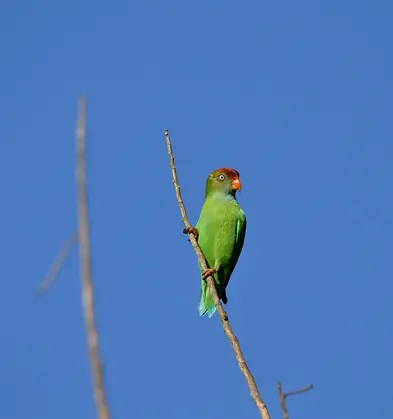
Sri Lankan Shama
Copsychus leggei
Shows dramatic differences between males and females. Males display glossy black upperparts with a bright rufous belly and distinctive white outer tail feathers, while females show duller brownish plumage with similar rufous underparts. Despite its secretive nature, its melodious song often reveals its presence. These birds are remarkable vocal mimics, with complex territorial songs that imitate many other species. Listen for them throughout Sri Lanka’s wet zone forests up to 1,400 meters elevation.
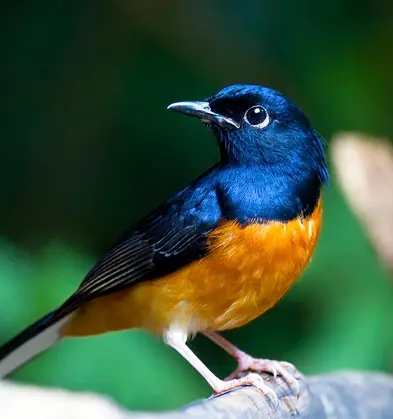
Sri Lanka Blue Magpie
Urocissa ornata
Among Sri Lanka’s most striking birds, dazzles with brilliant blue plumage, distinctive red bill, eye-ring and legs, contrasting with its rich chestnut head and neck. The long graduated blue tail ends in eye-catching black and white tips. Social structure typically involves small family groups of 3-7 birds, maintaining territories through complex vocalizations. As a key member of mixed-species flocks, it occupies a crucial ecological niche in Sri Lanka’s threatened forest ecosystems.
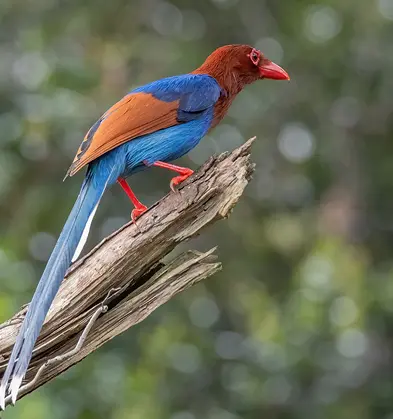
Sri Lanka Scimitar-Babbler
Pomatorhinus melanurus
Features an elegant profile with its characteristic long, yellow, curved bill. Its striking face pattern prominent white eyebrow extending to the nape contrasting with a bold black eye-stripe makes identification easy. The rusty-brown upperparts and dark crown complement clean white underparts with rich brown sides. These birds typically maintain permanent pair bonds or small family groups.
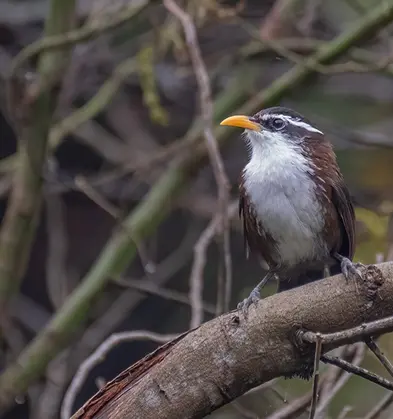
Black-rumped Flameback
Dinopium benghalense
Features a golden-yellow back and wings contrasting with a prominent black rump patch. Males display a bright red crown and nape, while females show black crown with red limited to the nape. Both sexes exhibit bold black-and-white facial patterns with a distinctive red “mustache” stripe. These woodpeckers methodically probe tree trunks and branches for insect prey, with territorial drumming most intense during breeding season.
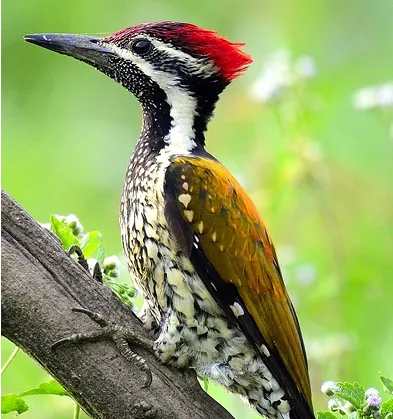
Sri Lanka Small Barbet
Megalaima rubricapillus
Showcases brilliant green upper plumage with vibrant orange-yellow face patches extending to the throat. A tiny scarlet breast-spot adds a pop of color, while a striking blue streak cascades down the sides of its head. Find them throughout the island’s wet zones up to 1000 meters, even in cultivated landscapes and lightly wooded areas.
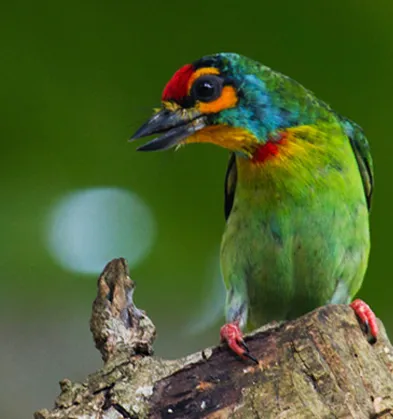
Green-billed Coucal
Centropus chlororhynchos
Stands apart with its distinctive pale-green bill and rich chestnut wings. Both males and females display an elegant purple sheen across the head and neck that shimmers beautifully in dappled sunlight. Unlike many secretive endemics, these birds occasionally venture into gardens near forests. They move with remarkable stealth through vegetation, communicating through soft, bubbling calls. Their special habitat is concentrated in wet zone forests with dense undergrowth and dwarf bamboo.
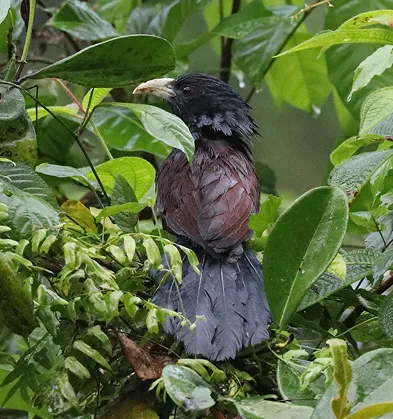
Spot-winged Ground-Thrush
Zoothera spiloptera
Features olive-brown upperparts with distinctive pale spots on its wings. Its striking face shows bold black and white markings, while the white underparts bear characteristic black spotting across the throat and breast. Find them throughout Sri Lanka’s wet lowlands and hills, reaching elevations up to 2,000 meters.
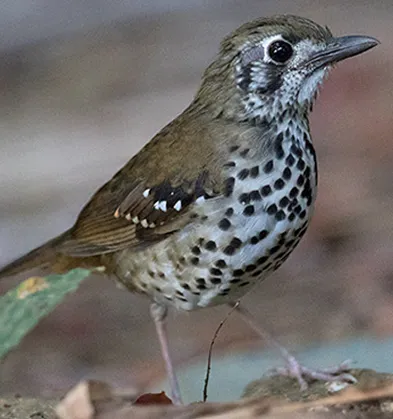
Sri Lanka Bush-Warbler
Garrulax cinereifrons
Displays distinctive dark plumage with a rusty-buff throat contrasting with deep gray breast and olive-brown upperparts. Males and females differ mainly in eye color—males have striking red eyes while females show pale buff. These birds are restricted to mountain habitats above 1,000 meters throughout Sri Lanka’s central highlands, especially in dense understory vegetation.
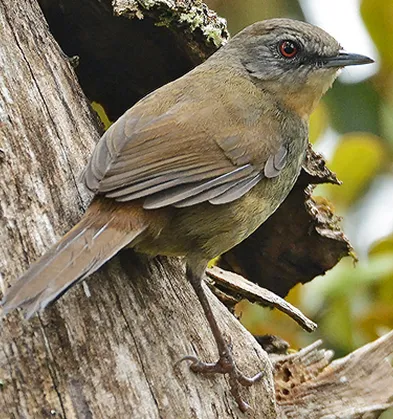
Sri Lankan Hill-Myna
Gracula ptilogenys
Stands out with its glossy black plumage, single pair of yellow skin flaps (wattles) on the neck and a white patch on its wings. It has light gray eyes and an orange-red bill with a black base. You can easily tell it apart from the Common Hill-Myna by looking for just one pair of wattles instead of two. These mynas are excellent mimics and can copy many sounds, including human speech. They mainly eat fruits and berries from forest trees up to 2,000 meters elevation.
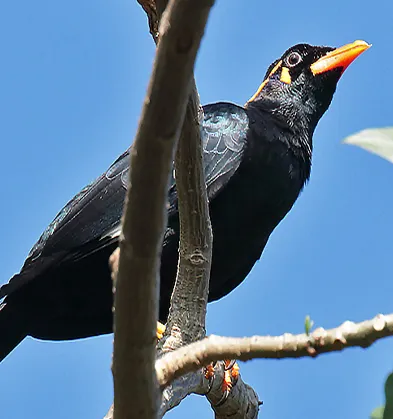
Brown-capped Babbler
Pellorneum fuscocapillus
Presents rich brown upperparts contrasting against a distinctly darker crown and nape. The cinnamon face and underparts provide subtle warmth to its appearance. These birds maintain year-round pair bonds, with territories defended through distinctive calls that you’ll hear far more often than you’ll see the birds themselves. They primarily search through leaf litter on the ground for small animals.
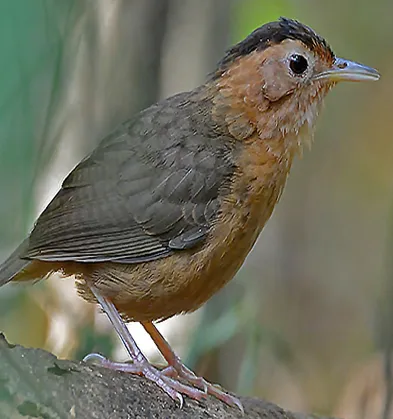
Ashy-headed Laughingthrush
Garrulax cinereifrons
Showcases unmistakable head decorations a blackish crown framed by striking yellow ear tufts and patches, complemented by delicate white tufts. Its olive-green upperparts flow into brown wings and tail, while vibrant yellow underparts carry a subtle olive tinge. These mountain specialists are strictly confined to elevations above 1000 meters, becoming truly abundant only above 1300 meters.
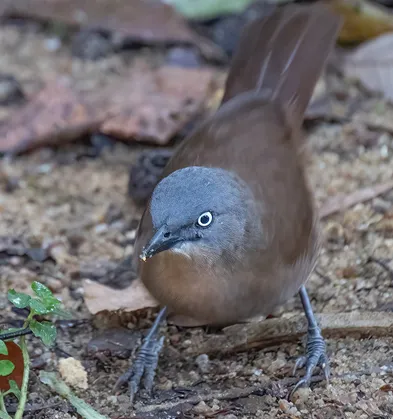
Yellow-fronted Barbet
Megalaima flavifrons
Showcases unmistakable head decorations—a blackish crown framed by striking yellow ear tufts and patches, complemented by delicate white tufts. Its olive-green upperparts flow into brown wings and tail, while vibrant yellow underparts carry a subtle olive tinge. These mountain specialists are strictly confined to elevations above 1000 meters, becoming truly abundant only above 1300 meters.
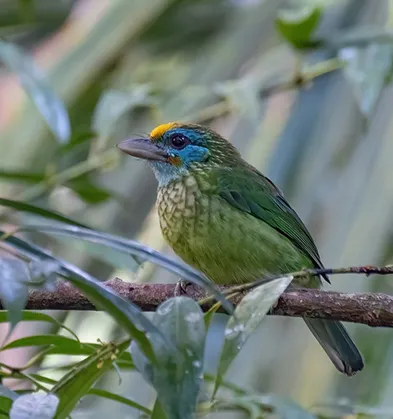
Sri Lankan White Eye
Zosterops Sri Lankaensis
A notably larger bird than the similar Oriental White-eye, with distinctly darker green plumage and a more robust bill. Its diagnostic white eye-ring shows a prominent break in the front. These birds show interesting behavioral shifts—forming large, vocal, mobile flocks during non-breeding periods but establishing territorial pairs during breeding season. Find them at elevations above 1,000 meters in Sri Lanka’s central highlands, particularly in Horton Plains and the Nuwara Eliya region.
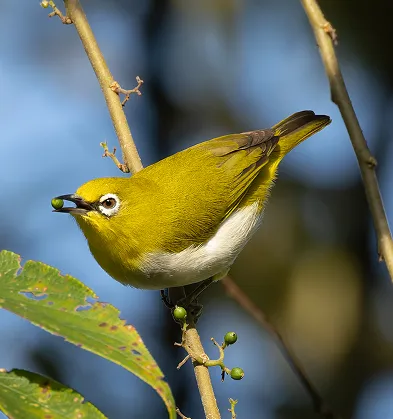
Serendib Scops-Owl
Otus thilohoffmanni.
One of Sri Lanka’s most elusive treasures, was only scientifically described in 2004! With its reddish-brown feathers and subtle dark markings, it blends perfectly into the rainforest shadows. Males have striking orange eyes while females display a softer yellow. Its secretive nature and haunting call continue to captivate the lucky few who encounter it. This endangered species is found only in Sri Lanka’s dwindling rainforests.
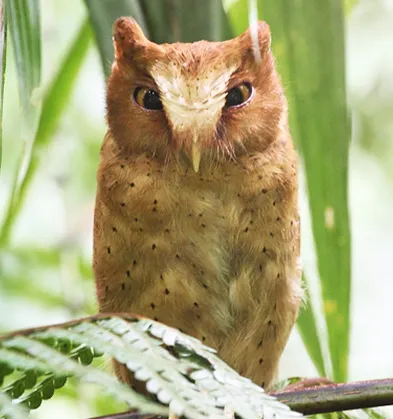
Red-faced Malkoha
Phaenicophaeus pyrrhocephalus
Showcases an unmistakable crimson face and robust pale green bill against dramatic black-and-white plumage. Its long tail features distinctive white edges and tip. Males and females differ mainly in eye color—females have white eyes, males have brown. These shy canopy-dwellers typically move in pairs, searching methodically for insects among dense foliage. Find them primarily in the lowland rainforests of Sri Lanka’s wet zone, especially Sinharaja Forest.
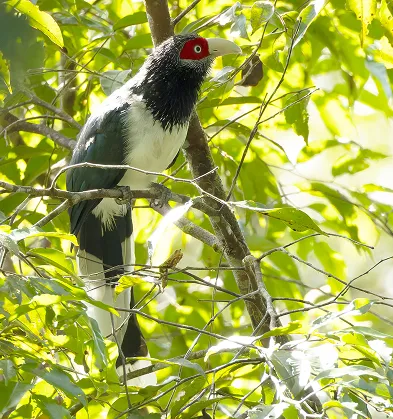
Sri Lankan Swallow
Hirundo hyperythra
A distinctive figure with its deep reddish-chestnut underparts and matching rump contrasting beautifully against glossy blue-black upperparts. Unlike the frenzied flight of some swallow species, these birds show a surprisingly measured flying style—alternating deliberate wing beats with graceful gliding phases that keep them relatively close to the ground. Watch them forage in pairs or loose groups across open landscapes, especially in morning light.
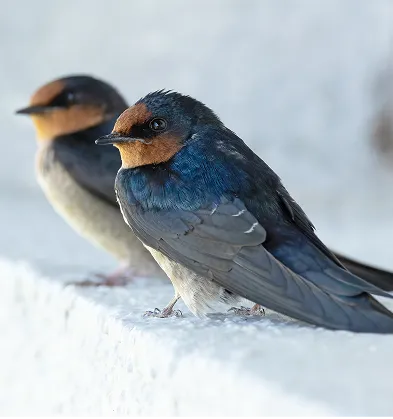
Chestnut-backed Owlet
Glaucidium castanonotum
A charming miniature hunter instantly recognizable by its rich chestnut upper parts contrasting beautifully with white underparts decorated with blackish streaks. Its bright yellow eyes pierce through forest shadows like tiny lanterns. Unlike many owls, this bold little hunter frequently calls during daylight hours, making it easier for patient birdwatchers to find. Listen for it throughout Sri Lanka’s wet zone forests at lower elevations.
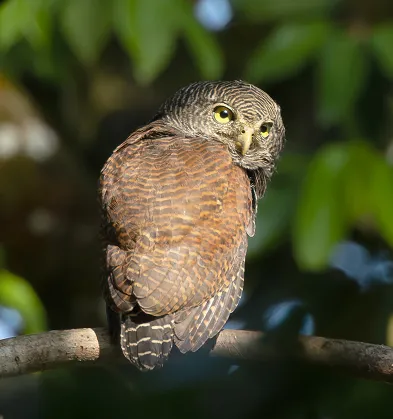
Sri Lankan Woodshrike
Tephrodornis affinis
Often goes unnoticed despite being widespread. The male sports sleek gray plumage with a distinctive dark eye mask, while females present a subtler, brownish version of this pattern. These canopy-dwelling birds prefer life among branches, typically moving in devoted pairs through open woodlands. Patient observers can spot them systematically hunting insects in the middle canopy. They show a marked preference for the island’s dry zone habitats up to 1000 meters elevation.
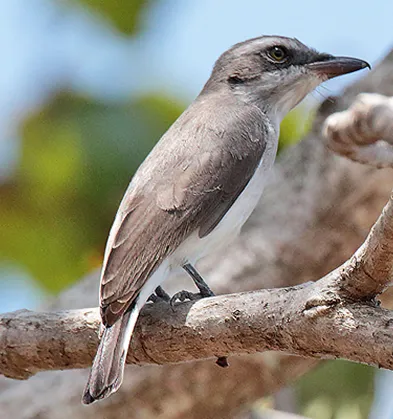
Dusky-blue Flycatcher
Eumyias sordidus
Features subdued blue-gray plumage highlighted by a vibrant blue forehead, contrasting dark eye area, and clean white belly. Young birds display distinctive brown feathers with buff spotting across the head, back, and breast. These adaptable mountain dwellers live primarily above 1,000 meters, inhabiting both natural forests and human-modified landscapes with sufficient trees.
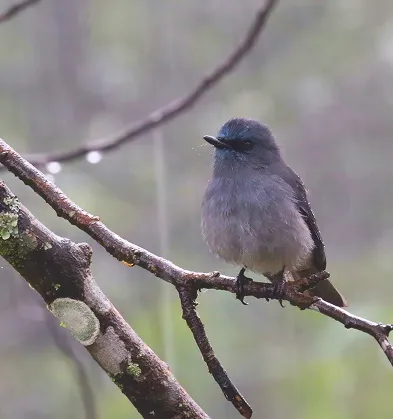
White-faced Starling
Sturnia albofrontata
Has a white forehead, face, throat, and undertail. These white areas blend into the greenish-gray-black of its back, wings and tail. The throat fades into a smoky-gray chest with white streaks. These birds stay high in the treetops of wet forests, traveling in small groups of 3-8 birds and nesting in tree holes. They mostly eat forest fruits, making them very sensitive to the loss of Sri Lanka’s remaining rainforests and increasingly threatened by continued loss of primary forests.
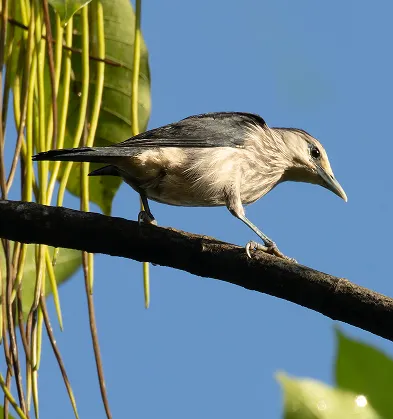
Sri Lankan Spurfowl
Galloperdix bicalcarata
Lives only in Sri Lanka’s lush southern forests. Though rarely seen, its distinctive rising call echoes through the forest, especially at dawn and dusk. The male shows off striking black feathers with white spots, rich chestnut belly, and bright red facial skin. Females wear more subtle colors that blend perfectly with the forest floor. The best places to spot them are Sinharaja Forest Reserve and areas near Horton Plains National Park, especially in forests between 500-1,500 meters elevation.
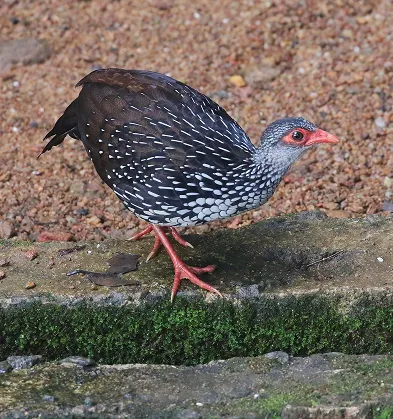
Sri Lankan Grey Hornbill
Ocyceros gingalensis
Sports sleek gray feathers on its upper body, contrasting with clean white underparts and a rich brown crown. While males and females look nearly identical, their bills tell them apart—females have mostly black bills with cream edges, while males have mainly cream bills with a dark patch at the base. Find them throughout Sri Lanka’s lowland forests and well-wooded gardens, in both wet and dry areas up to 1300 meters elevation.
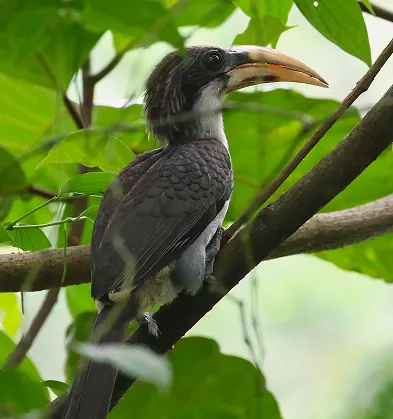
Pompadour Green Pigeon
Treron pompadora
Flocks blend perfectly with tropical leaves. Males show off distinctive maroon patches on their shoulders and back—a splash of color females don’t have. These social birds communicate through soft, musical calls as they travel between fruiting trees. They play a crucial role spreading seeds, especially from fig trees. Find them widespread below 1,200 meters, from pristine forests to suburban gardens with fruit trees.
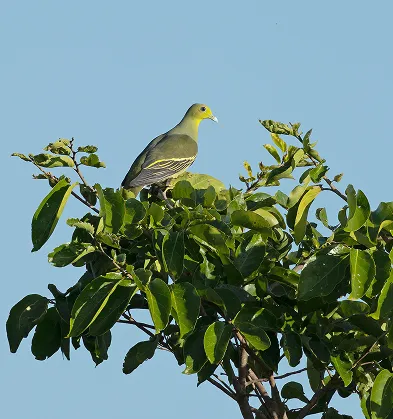
Crimson-backed Flameback
Dinopium psarodes
A magnificent woodpecker, commands attention with its stunning crimson back and wings. Males sport brilliant crimson crowns while females display elegant black crowns adorned with delicate white spots. Unlike many species with elevation constraints, these adaptable birds comfortably travel from lowland forests all the way to the highest mountain peaks, their resonant drumming echoing through diverse forest types. Listen for their distinctive drumming on tree trunks throughout wooded areas.
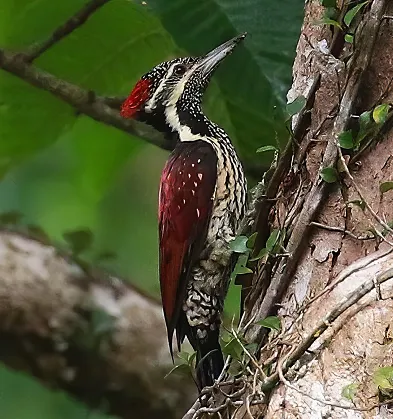
Sri Lanka Crested Drongo
Dicrurus lophorinus
A distinctive glossy black bird, sports a prominent frontal crest and deeply-forked tail. It’s a renowned vocal mimic with an impressive repertoire of imitations. It plays a crucial role as a sentinel species in mixed-species feeding flocks, alerting other birds to predators. Pairs maintain year-round territories throughout the wet zone and act as “guardians” for mixed-species flocks in Sinharaja’s forests.
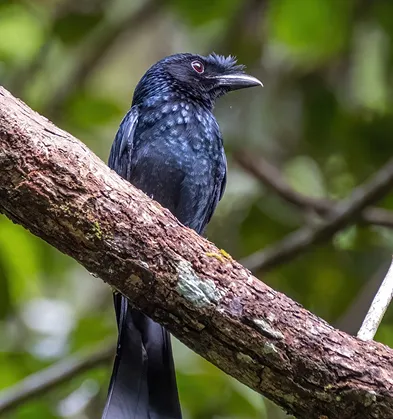
Black-capped Bulbul
Pycnonotus melanicterus
Dazzles with its distinctive black cap contrasting sharply against olive-green upperparts and bright yellow underparts. One of the few ways to tell males from females—males have vibrant red eyes while females display more subdued brown eyes. These spirited birds move through forests in animated pairs or small, vocal groups, their melodious calls often revealing their presence. While primarily creatures of the hills up to 1300 meters, adventurous populations have established scattered colonies throughout the dry zone.
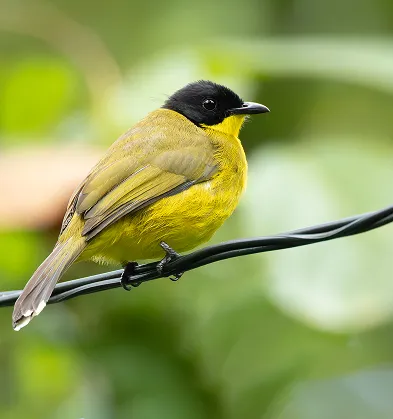
Sri Lanka Woodpigeon
Columba torringtonii
Hides in misty highland forests as one of Sri Lanka’s most elegant birds. Both males and females display the same beautiful appearance—dark purplish-grey feathers with a distinctive chess-board pattern on their necks and rich wine-colored undersides. These shy birds form lifelong pairs or small family groups. Though hard to see, listen for their deep, resonant calls echoing through the mountain forests. They’re best heard and seen in cloud forests above 1,000 meters, especially in Horton Plains and the Knuckles mountain range.
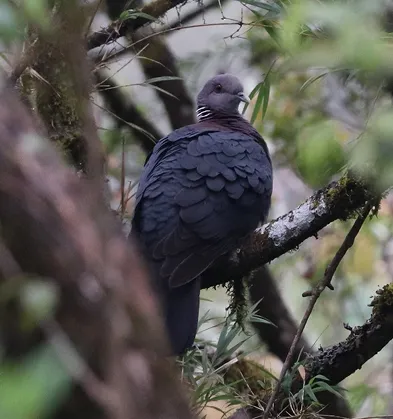
Legge’s Flowerpecker
Dicaeum vincens
Distinguished by its short, stout bill. Males display dark blue-grey upperparts with distinctive white-tipped outer tail feathers, white throat and upper breast, transitioning to yellow underparts. Females show paler coloration with grey-olive upperparts. Recent studies highlight their love for mistletoe berries and small fruits.
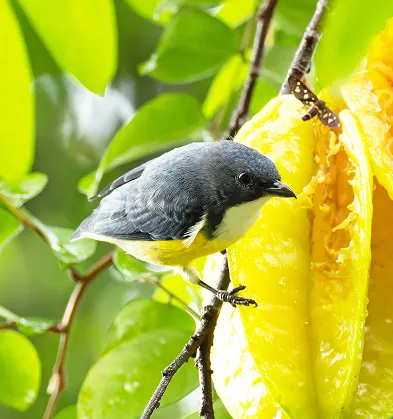
Sri Lankan Whistling Thrush
Myophonus blighi
Stands among Sri Lanka’s most mysterious species. Males wear slaty-black feathers with subtle blue tinges and a striking electric-blue shoulder patch that often remains hidden. Females show a warmer brown color while keeping the distinctive blue shoulder marking. Their secretive lifestyle adds to their mystique, making dawn and dusk your best chance of spotting one as they forage near rushing mountain streams. Declining numbers and specific habitat requirements make each sighting particularly precious.
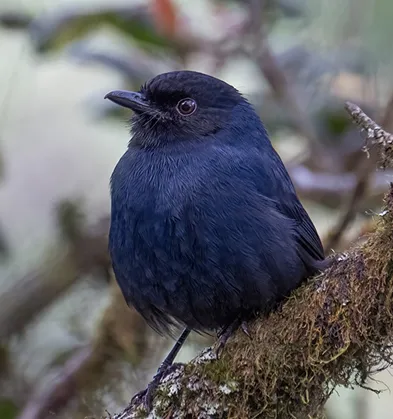
Sri Lanka is a biodiversity hotspot and a must-visit destination for wildlife enthusiasts, home to a wide range of unique and rare mammal species. From the elusive Sri Lankan Leopard and the Purple-faced Langur to the nocturnal Red Slender Loris, these fascinating animals inhabit the island’s diverse ecosystems, including rainforests, grasslands, and montane forests. Sri Lanka’s rich mammalian diversity offers incredible opportunities for wildlife safaris, nature photography, and eco-tourism, making it one of the best places in Asia to experience wild mammals in their natural habitats.
Sri Lankan Leopard
Panthera pardus kotiya
The Sri Lankan leopard an endemic subspecies, reigns as the undisputed apex predator of the island and the crown jewel of Sri Lanka’s wildlife tourism. With no tigers, lions, or hyenas to compete with, these magnificent cats have developed distinctive behaviors and confidence rarely seen elsewhere, establishing Sri Lanka as Asia’s premier leopard-watching destination. Yala National Park boasts one of the world’s highest leopard densities (12-14 individuals per 100 km² in certain blocks), with Block I offering up to 75% sighting success during peak seasons.
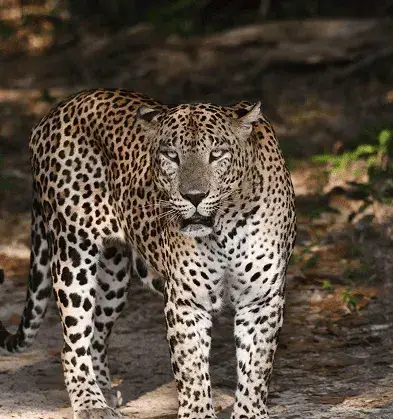
Sri Lankan Elephant
Elephas maximus
The Sri Lankan elephant a distinct subspecies of the Asian elephant, represents one of the island’s most iconic wildlife treasures. Distinguished from their African cousins by smaller rounded ears, concave backs, and single-fingered trunk tips, these gentle giants stand 2.5-3.0 meters tall with males weighing 3,000-5,000 kg. Recent surveys estimate Sri Lanka’s wild elephant population at approximately 5,800-6,000 individuals—nearly 10% of all remaining Asian elephants worldwide. While historically distributed across the entire island, today’s elephants primarily inhabit dry lowland regions, with a few isolated populations persisting in the highlands.
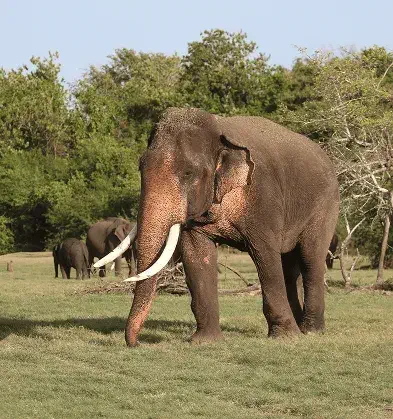
The Golden or Black-backed Jackal
Canis aureus
The Golden or Black-backed Jackal is a high-level carnivore primarily found in Sri Lanka’s lowland jungles, especially throughout the dry zone. These adaptable predators prefer hunting in open habitats like grasslands and scrub forests, typically moving in small packs or pairs. Their omnivorous diet includes lizards, birds, and small mammals, while they readily scavenge from carcasses and consume fruits and berries when available. Visitors can frequently spot these intelligent canids in Yala National Park, where they’re commonly seen, as well as in Wilpattu National Park, Udawalawe, and Bundala.
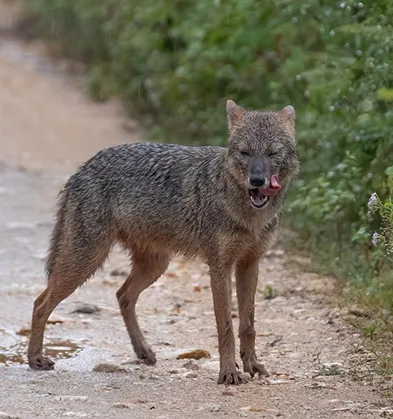
Fishing Cat
Prionailurus viverrinus
A remarkable medium-sized feline that can grow to the size of a dog, is distinguished by its distinctive facial markings—two white stripes bordering the eyes and prominent white patches on the cheeks. This semi-aquatic predator sports greyish fur adorned with broken longitudinal stripes along its sides and clearer stripes on its back. Primarily inhabiting wetland environments in both lowland and highland areas, these cats are exceptional swimmers and hunters, specializing in catching fish but also preying on small to medium-sized animals. Recent conservation studies indicate the species is classified as Vulnerable on the IUCN Red List, with populations declining due to wetland destruction, pollution, and poaching.
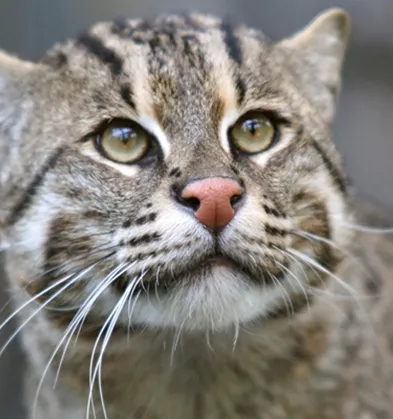
Purple-faced Leaf Monkey
Trachypithecus vetulus
The Purple-faced Leaf Monkey, endemic to Sri Lanka, is a naturally shy primate that typically avoids human contact but has adapted to urban environments due to its fondness for jackfruit commonly found in residential gardens. These arboreal creatures inhabit tall forests throughout the island except for the northern regions, organizing themselves into small family troops of approximately 12 members led by a dominant alpha male. While primarily folivorous (leaf-eating), they supplement their diet with various fruits. Several subspecies exist, including the distinctive “Bear Monkey” found exclusively in the Hakgala and Horton Plains National Park, characterized by its shaggy, longer fur.
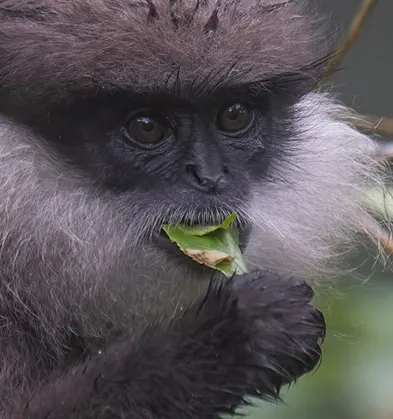
Indian Flying-fox
Pteropus giganteus
The Common or Indian Flying-fox is Sri Lanka’s largest bat, boasting an impressive wingspan of 1.2 meters. These remarkable creatures are easily identified by their fox-like faces with distinctive yellowish fur that contrasts sharply with their dark wings. Highly adapted to living near humans, they form large colonies that roost in tall trees, creating spectacular displays at dawn and dusk when they depart for feeding or return to rest. These bats feed exclusively on fruits and are frequent visitors to home gardens. Visitors can observe these fascinating mammals throughout Sri Lanka.
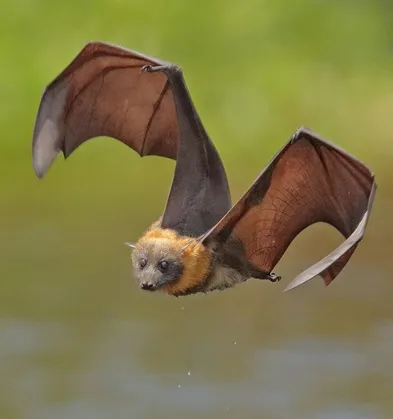
Toque Macaque
Macaca sinica
The Toque Macaque, Sri Lanka’s most commonly encountered monkey, frequently roosts in trees near human settlements across the island. Named for their distinctive “toque” or cap of radiating hair, these social primates organize themselves around dominant alpha males and stable female matrilines. As adaptable omnivores, they consume an impressive variety of plant materials and animal matter. Three subspecies exist across Sri Lanka’s varied ecosystems—dry zone, wet lowlands, and mountains—each distinguished by the color and length of their characteristic cap hairs.
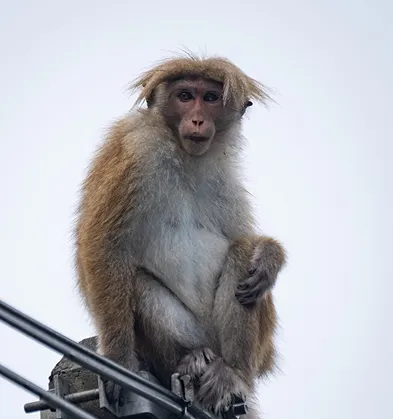
The Ruddy Mongoose
Herpestes smithii
The Ruddy Mongoose is a common sight in the southern lowlands of the island. While often confused with the Brown Mongoose, its distinctive black-tipped upward-curling tail makes identification easier. These carnivorous mammals typically travel in pairs through forested areas, where they hunt and scavenge for food. They’re frequently spotted near Leopard kills, taking advantage of these predators’ leftovers. For wildlife enthusiasts hoping to observe these fascinating creatures in their natural habitat, Yala National Park offers excellent viewing opportunities. Their adaptable nature and interesting behaviors make them a captivating subject for wildlife watchers exploring the region.
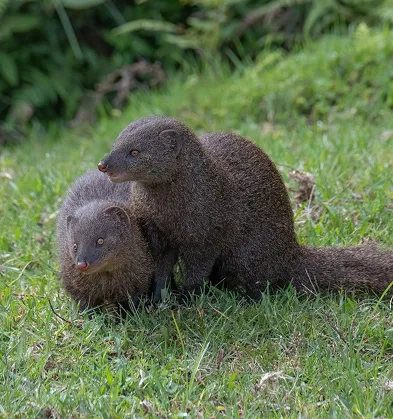
The Indian Muntjac or Barking Deer
Muntiacus muntjak
The Indian Muntjac or Barking Deer is a medium-sized deer characterized by its uniform brown coloration and small antlers mounted on distinctive pedicles. These shy creatures thrive where forest cover meets grasslands, inhabiting both lowland and highland regions across Sri Lanka. While typically solitary, they occasionally form small groups when predator threats are minimal. Their diet consists primarily of grasses and tender leaves. Wilpattu National Park offers the best viewing opportunities, though patient visitors might also spot them in Horton Plains National Park, Sinharaja Forest Reserve, and the quieter areas of Yala National Park. Early morning and late afternoon provide optimal sighting times when these cautious deer emerge to feed in forest clearings.
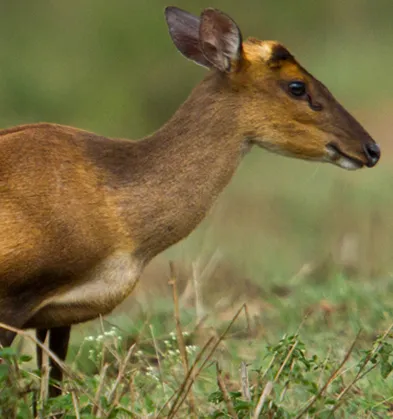
Sambar
Cervus unicolor
The majestic Sambar, incorrectly called ‘Elk’ by 19th century European hunters, reigns as Sri Lanka’s largest deer species. Easily identified by its uniform dark chocolate brown coat and impressive size, this adaptable creature thrives across diverse habitats from dense rainforests to open grasslands. Only males develop the distinctive antlers used in competitive battles for mating rights. Visitors can observe these magnificent animals in several Sri Lankan national parks, with the largest herds—sometimes numbering up to 30 individuals—found in the misty highlands of Horton Plains National Park.
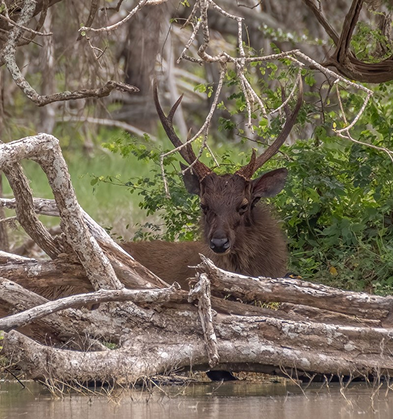
Hanuman or Grey Langur
Semnopithecus priam
The elegant Grey Langur, with its distinctive dark face and flowing tail, may occasionally be confused with the Purple-faced Leaf Monkey, though keen observers will note the Langur’s more graceful build. These social primates form groups of approximately 20 individuals and primarily inhabit Sri Lanka’s dry lowlands, where they feed on tender leaves and fruits. Displaying remarkable intelligence, they often strategically position themselves near Spotted Deer to benefit from additional vigilance against predators. Generally shy and peaceful around humans, these fascinating primates are most commonly observed in the cultural triangle of Sri Lanka—particularly in the ancient cities of Sigiriya, Anuradhapura, and Polonnaruwa.
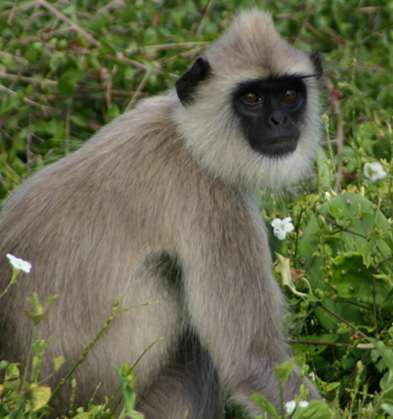
Rusty-spotted Cat
Prionailurus rubiginosus
The Rusty-spotted Cat holds the distinction of being Sri Lanka’s smallest wild cat and competes globally for the title of world’s smallest wild feline alongside the Black-footed Cat (Felis nigripes) and Kodkod (Leopardus guigna). With a slender frame smaller than a domestic cat, this diminutive predator features grizzled brownish-grey fur adorned with distinctive rusty-brown spots and two white facial stripes bordering the inner edges of its eyes. Its short legs support a compact body, while its moderately long, unmarked tail displays a more rusty coloration than the rest of its coat.
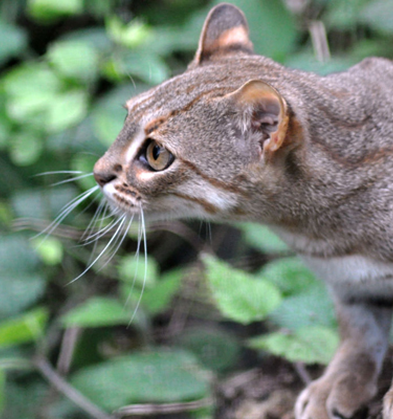
Jungle Cat
Felis chaus
The Jungle cat a medium-sized wild felid native to Sri Lanka, sports a distinctive sandy brown to grayish coat with striking black-tipped, pointed ears that create a characteristic rimmed appearance. Recent wildlife surveys indicate they primarily inhabit the island’s dry lowland scrub forests and grasslands, with notable populations in Yala, Wilpattu, and Bundala National Parks. Less adaptable to human presence than their cousin the fishing cat, jungle cats maintain territories ranging from 1-6 square kilometers depending on prey density. These solitary, primarily crepuscular hunters employ a stealthy stalk-and-pounce technique to capture prey.
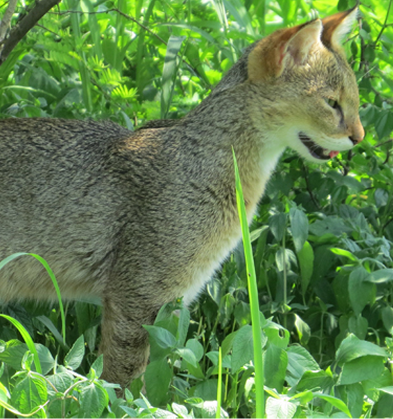
Indian Grey Mongoose
Herpestes edwardsii
The Indian Grey Mongoose is easily recognizable by its uniform grey grizzled fur and distinctive reddish eyes. As the smallest mongoose species in Sri Lanka, these nimble creatures can be found throughout the island, primarily inhabiting grasslands and lightly wooded areas. Though occasionally spotted in pairs, they tend to be shy around humans. The Indian Grey Mongoose follows an omnivorous diet, consuming fruits and roots while also hunting invertebrates and rodents. Their adaptable feeding habits and widespread distribution make them a resilient species within Sri Lanka’s diverse ecosystem, despite their typically elusive nature around human observers.
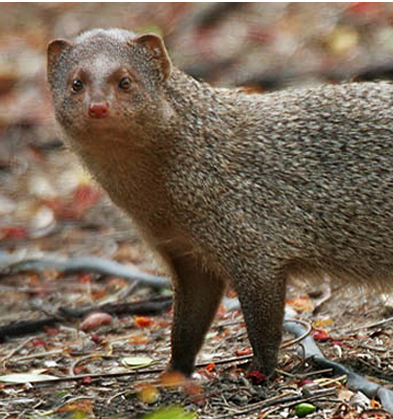
Gray Slender Loris
Loris lydekkerianus
The Gray Slender Loris exists in two distinct subspecies, with the Northern Slender Loris predominantly inhabiting Sri Lanka’s dry lowlands. This captivating nocturnal primate features a distinctive grayish coat complemented by yellow pigmentation around the ears, eyelids, and muzzle, along with characteristic oval dark patches encircling its large, forward-facing eyes. Commonly spotted in the historic regions of Sigiriya and Polonnaruwa, these curious creatures frequently venture into hotel gardens in search of their insect prey. Recent research reveals concerning population declines due to habitat fragmentation, road mortality, and illegal pet trade.
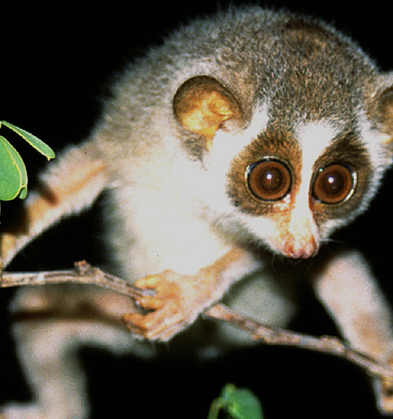
Red Slender Loris
Loris tardigradus
The Red Slender Loris is a distinctive primate smaller than its relative, the Gray Slender Loris, featuring more compact ears and an elongated muzzle. True to its name, this endangered nocturnal mammal displays a striking reddish coat with distinctive dark reddish circular markings surrounding its large, expressive eyes. These specialized primates are exclusively found within Sri Lanka’s wet zone forests, including the biodiversity hotspots of Sinharaja and Morapitiya. Their diet primarily consists of insects, though they occasionally consume other small animals. Recent conservation studies indicate critical population declines due to habitat loss, with fewer than 2,000 individuals estimated to remain in the wild.
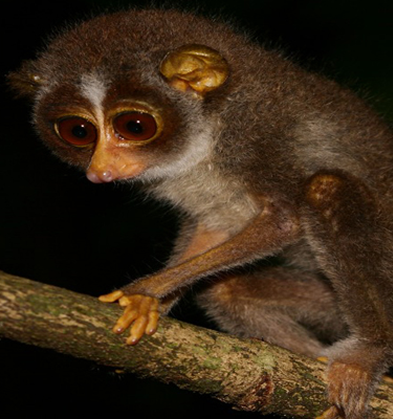
The Short-nosed Fruit Bat
Cynopterus sphinx
The Short-nosed Fruit Bat is one of four fruit bat species found in Sri Lanka, measuring up to 10 cm in body length. Distinguished by a variable reddish tinge on its back and nape—whose intensity differs based on age and sex—these agile creatures navigate entirely by vision and possess a remarkably keen sense of smell. They typically roost in small groups, showing a particular preference for palm trees. While common throughout the island, they’re especially prevalent in home gardens across the northern regions. Visitors can spot these bats in Jaffna Peninsula gardens, around Mannar Island, and in the coastal areas of Trincomalee.
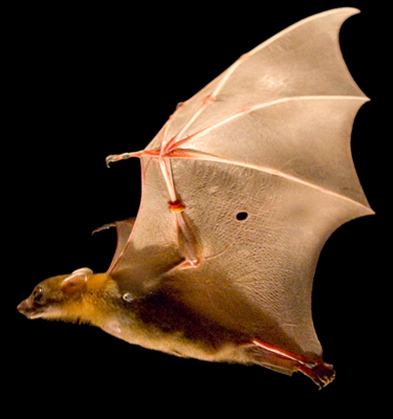
Black-naped or Indian Hare
Lepus nigricollis
The Black-naped Hare holds the distinction of being Sri Lanka’s only wild hare or rabbit species. This predominantly nocturnal mammal thrives in mixed habitats where forests meet grassy clearings, making it particularly well-adapted to the ecological transitions found on Colombo’s outskirts. A committed herbivore, it sustains itself by feeding on various grasses, tender shoots, and young leaves. Visitors hoping to spot these elusive creatures should explore wildlife sanctuaries such as Bundala National Park, Yala, and Wilpattu, where evening safari drives offer the best sighting opportunities. They can also be found in less protected areas including Talangama Wetlands and even some larger urban parks.
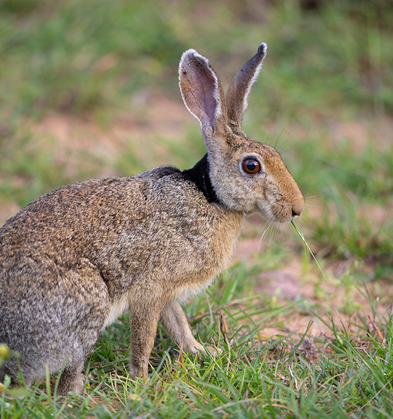
Crested Porcupine
Hystrix indica
The Crested Porcupine, an unmistakable creature with its blackish-brown and white coloration and impressive cloak of pointed quills, serves as a formidable opponent to predators who often bear these quills in their flesh long after failed attacks. Surprisingly adaptable to human environments, these nocturnal mammals are frequently spotted in urban areas during late night hours, particularly when escaping domestic dogs. Their resilience to human presence makes them bold enough to establish sleeping burrows even in home gardens. With a diverse herbivorous diet spanning roots, tender leaves, and fruits, these fascinating creatures can be observed across Sri Lanka.
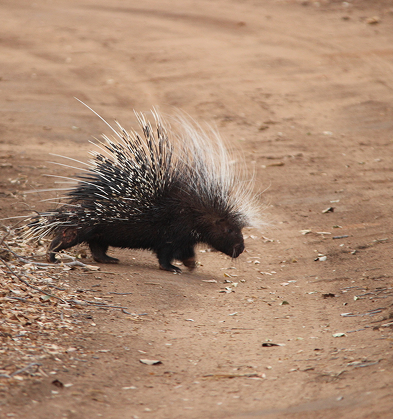
The Golden Palm Civet
Paradoxurus zeylonensis
The Golden Palm Civet is a slightly smaller relative of the common Palm Civet, distinguished by its beautiful reddish-golden fur. These highly nocturnal mammals make their homes in tall trees, where they typically live in pairs and find shelter in tree hollows. Their omnivorous diet includes a variety of fruits and berries, complemented by small animals such as birds, insects, and lizards. Wildlife enthusiasts hoping to spot these elusive creatures should consider visiting Sigiriya or Sinharaja Forest Reserve, where sightings are occasionally reported during night excursions. Their arboreal lifestyle and nocturnal habits make them one of Sri Lanka’s more challenging but rewarding wildlife encounters.
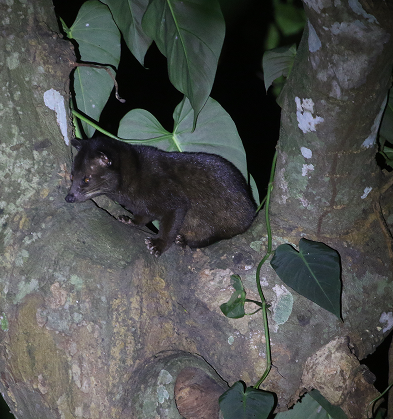
Otter
Lutra lutra
The Otter is among Sri Lanka’s most elusive mammals, with many locals unaware of its presence. This chocolate-brown, sausage-shaped creature features webbed feet perfectly adapted for aquatic hunting and a distinctive thick-based tail. While primarily nocturnal, these skilled predators occasionally appear during daylight hours, particularly around Hunas Falls. They inhabit unpolluted water bodies throughout the island, feeding mainly on fish but also opportunistically hunting aquatic animals and water birds. Visitors hoping to spot otters should explore Kanneliya Forest Reserve, Victoria Park in Nuwara Eliya, and the wetlands of Bundala National Park. Their reputation for raiding fish ponds makes them both fascinating wildlife and occasional nuisances to local gardeners.
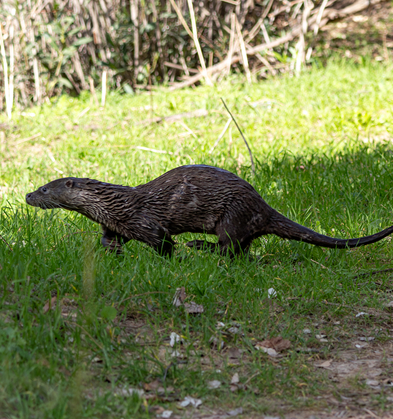
Giant Flying Squirrel
Petaurista philippensis
The Giant Flying Squirrel offers wildlife enthusiasts a truly magical spectacle as it gracefully glides between trees in Sri Lanka’s forests. This highly nocturnal creature features markings on its upper body similar to the black and yellow Giant Squirrel, complemented by distinctive pale underparts. Due to its secretive nighttime habits, these remarkable mammals remain challenging to spot and their social structure is still largely mysterious to researchers. For wildlife enthusiasts hoping to witness these elusive gliders in action, a known colony exists at a property in Kandy, where dusk provides the optimal viewing opportunity as they emerge for their nightly activities.
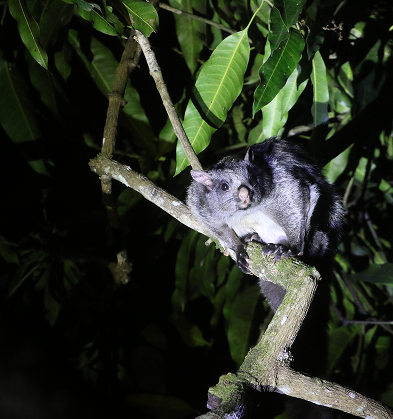
Sri Lankan Sloth Bear
Melursus ursinus inornatus
An endemic subspecies, is widely feared as the most dangerous wildlife encounter in the island’s forests. Recent surveys estimate only 500-700 individuals remain in Sri Lanka, classifying them as endangered. Distinguished by their shaggy black fur, elongated snout, and distinctive white V-shaped chest marking, these bears possess exceptionally powerful 10-12 cm claws evolved primarily for accessing termites. These formidable natural tools become dangerous weapons when the bears feel threatened. Research from the Wildlife Conservation Society indicates sloth bears are responsible for more human injuries than any other Sri Lankan wildlife, with approximately 10-15 serious encounters documented annually.
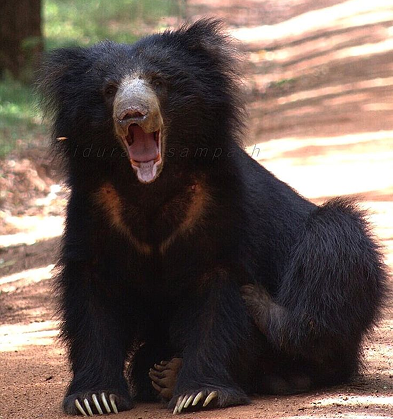
Grizzled Indian or Giant Squirrel
Ratufa macroura
Stands as the largest among Sri Lanka’s four squirrel species, impressing wildlife enthusiasts with its remarkable size and bold personality. Unlike many forest creatures, these charismatic mammals have become surprisingly comfortable around humans, often approaching visitors in hopes of securing a fruity treat. Typically observed in pairs, these arboreal acrobats require tall forest habitats to thrive and establish their impressive leaf nests. Sri Lanka hosts three distinct subspecies across different ecological zones: the highland variety showcases striking black and yellow coloration with a distinctive frosted white tail; the lowland subspecies features a completely black tail; while the dry lowland variety displays characteristic brown and buff fur.
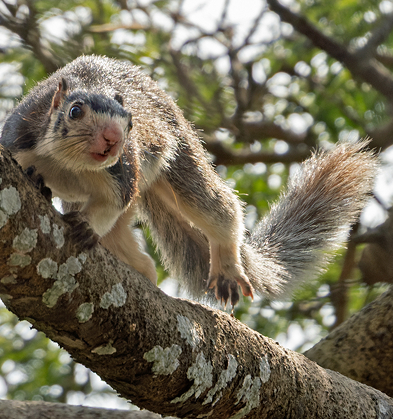
Common Palm Civet
Paradoxurus hermaphroditus
The Common Palm Civet also known as the Toddy Cat, is a highly adaptable nocturnal mammal found throughout Sri Lanka. With its sleek greyish fur and long flowing tail, this solitary creature moves with graceful agility. While females can be spotted with their young, adults typically live alone. Their omnivorous diet includes insects, rodents, and various fruits, contributing to their success in diverse habitats. Visitors can observe these fascinating animals in urban areas around Colombo and Kandy, as well as in natural settings like Sinharaja Forest Reserve, Yala National Park, and Horton Plains. They’re particularly active during early evening hours, often seen navigating along tree branches or rooftops.
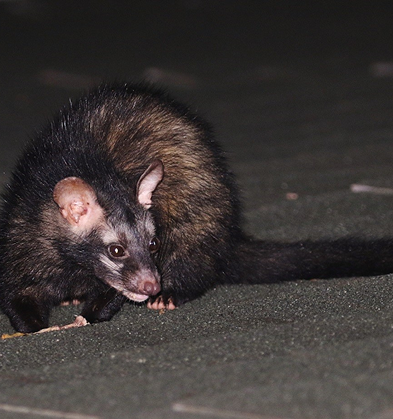
The Small or Ring-tailed Civet
Viverricula indica
The Small or Ring-tailed Civet is instantly recognizable by its distinctive black and white body and its namesake ringed tail. As the most carnivorous of Sri Lanka’s three palm civet species, it primarily hunts small rodents, hares, and mouse deer. These solitary creatures are typically spotted alone and have adapted to living in both roof spaces and tree hollows. Visitors have the best chance of spotting these nocturnal mammals during night safaris in Yala National Park, Wilpattu National Park, and Udawalawe National Park. They can also occasionally be seen in the forest edges around Sigiriya and in less disturbed forested areas throughout the central and southern regions of Sri Lanka.
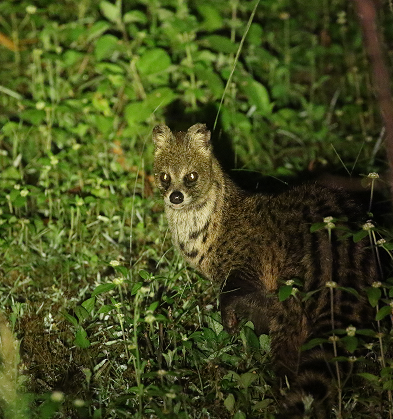
Sri Lanka’s vibrant marine life makes it a top destination for ocean lovers and underwater explorers. Surrounded by the warm waters of the Indian Ocean, the island is home to an incredible variety of marine species, including blue whales, dolphins, sea turtles, manta rays, and colorful coral reef fish. From whale watching in Mirissa to snorkeling and diving in Trincomalee or Hikkaduwa, Sri Lanka offers unforgettable experiences for marine wildlife enthusiasts, making it one of the best places in Asia to discover the wonders of the underwater world.
Risso's Dolphin
Grampus griseus
The Risso’s Dolphin stands out as the largest “true” dolphin without a distinct beak, featuring a robust body and blunt head with a unique concave groove running from blowhole to mouth. Their appearance transforms dramatically throughout their lives—beginning as uniformly light grey calves, darkening to dun-colored juveniles, then gradually lightening to nearly white adults due to extensive scarring, particularly prominent in males. Only their flippers and flukes retain their original darker coloration.
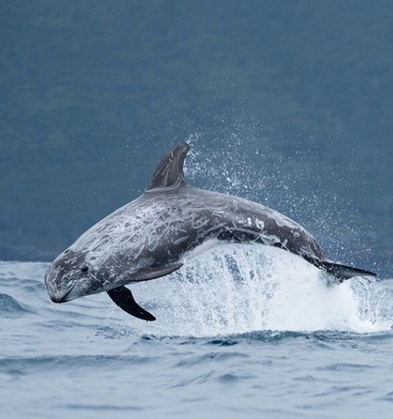
Bottlenose Dolphin
Tursiops truncatus
The Common Bottlenose Dolphin is an impressive marine mammal known for its robust, bulky physique—notably larger than its Indian Ocean cousin. Distinguished by a stubby beak separated from its prominent melon by a distinct crease, this powerful cetacean displays complex coloration ranging from slate grey to bluish or dun on its upper body, gradually lightening along its sides to pale greyish-pink or white on its underside. These magnificent animals can reach lengths of 3.9 meters and weights of 650 kg.

Spinner Dolphin
Stenella longirostris
The Spinner Dolphin reigns as the most acrobatic and abundant cetacean in Sri Lankan waters, delighting observers with its spectacular aerial displays. These small, slender marine mammals are characterized by their long, slim beaks and distinctive three-tone coloration: dark grey on top, medium-grey flanks, and creamy white or pink bellies, often with a dark stripe running from eye to flipper.
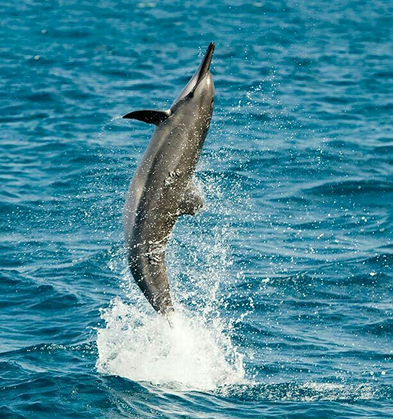
Sperm Whale
Physeter macrocephalus
The magnificent Sperm Whale reigns as the largest of all toothed whales, deriving its name from the enormous spermaceti organ that occupies most of its distinctive squared-off head—a feature that accounts for nearly one-third of the male’s impressive 20-meter length and 55-ton weight. These marine giants display a relatively robust body with a characteristically wrinkled surface behind their blunt, massive heads, and sport a fairly uniform dark grey or brown coloration occasionally marked with subtle streaks and spots.
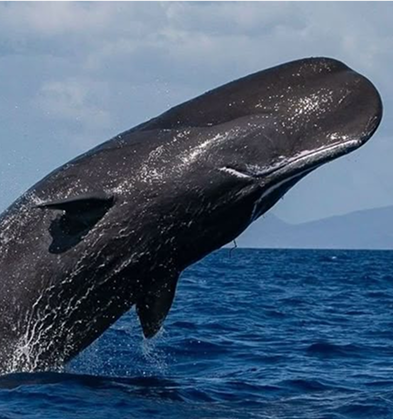
Bryde's Whale
Balaenoptera edeni
Named after Norwegian whaler Johan Bryde (pronounced “broodess”), these magnificent marine mammals feature a distinctive V-shaped head with three parallel longitudinal ridges extending from rostrum to blowholes—a unique characteristic that helps distinguish them from other baleen whales. Their streamlined bodies, reaching up to 17 meters in length and weighing as much as 40 tons, display a dark, smoky blue-grey coloration on top with cream or lighter blue-grey undersides and distinctive yellowish-white throat pleats numbering between 40-70.
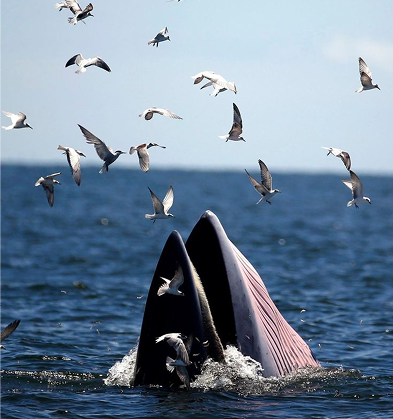
Blue Whale
Balaenoptera musculus
The Blue Whale stands as the largest creature ever to inhabit Earth, with its streamlined body reaching astonishing dimensions of up to 100 feet (30 meters) in length and weighing over 200 tons—a truly colossal marine giant whose tongue alone rivals an elephant in weight and whose heart compares to an automobile. Distinguished by a broad, U-shaped head comprising nearly a quarter of its total length, these magnificent mammals display a characteristic blue-grey coloration with lighter mottling, while their undersides feature paler or white tones that may occasionally take on yellowish-green hues from microorganism growth. As powerful swimmers, Blue Whales cruise comfortably at 20 km/h but can accelerate to an impressive 45 km/h when disturbed.
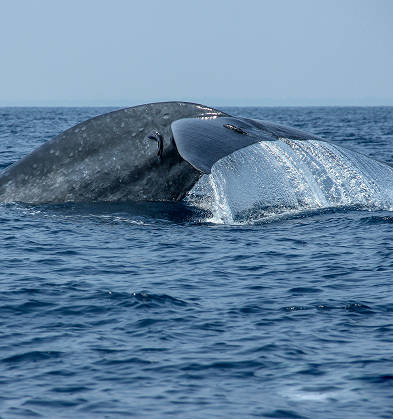
Sri Lanka is a paradise for butterfly enthusiasts, with over 240 species fluttering across its lush landscapes, including many rare and endemic varieties. From vibrant swallowtails to delicate blues and yellows, these colorful insects can be found in forests, gardens, and highland meadows throughout the island. With its rich biodiversity and tropical climate, Sri Lanka offers ideal conditions for butterfly watching and photography, making it one of the best destinations in Asia to explore and enjoy the beauty of butterflies in their natural habitats.
Common Banded Peacock
Papilio crino
The butterfly is solitary and it flies in and out of scrub jungles and in wide open spaces, it flies fast and high, and out of reach. It is a nectar lover and prefers the flowers of tall shrubs and small trees but seen flying high above and forages on the trees. It spends little time on a flower and flies away in a hurry. The male is occasionally attracted to wet soil or gravel.
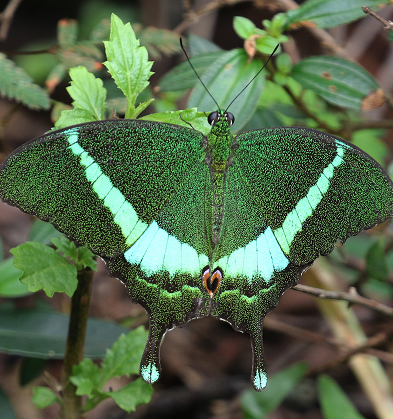
Sri Lankan Tree Nymph
Idea iasonia
Much of its time is spent hovering or sailing high up in the canopy in a slow motion flight. Although frequently seen very high in the trees, it may be observed at or near ground level during courtship or during its visits to flowers. An endemic butterfly.
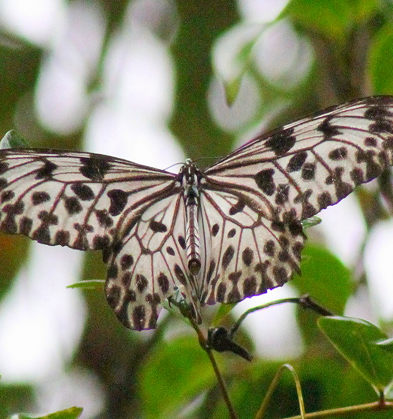
Common Pierrot
Castalius rosimon
It flies relatively fast and low to the ground, and the males frequently settle on roads and gravel patches. It takes nectar from flowers frequently with a choice of wide range of plants with small flowers. When settled once, it moves about a great deal in a slow deliberate manner.
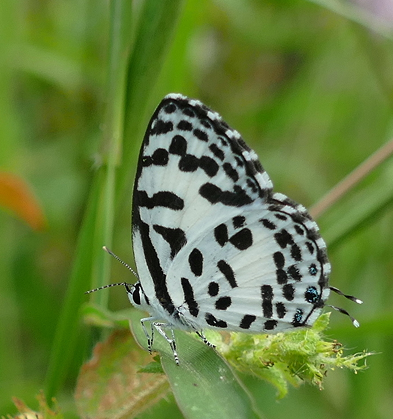
Common Leopard
Phalanta phalantha
A relatively small but striking butterfly, easily recognized by its vibrant, rich orange coloration. Its wings are beautifully adorned with an intricate pattern of black spots and delicate streaks, giving it a lively and almost ornamental appearance. This bold patterning not only enhances its beauty but also helps it blend into the sun-dappled forest floors and dry scrublands where it is commonly found. Agile and energetic, the Common Leopard is a delight to observe as it flits rapidly through its habitat, pausing occasionally to bask in patches of warm sunlight.
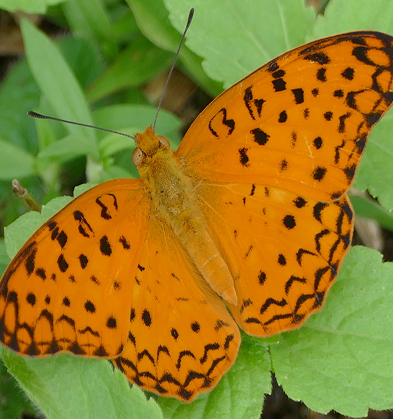
Common Jezebel
Delias eucharis
A medium-sized butterfly belonging to the family Pieridae, and it is widely distributed across many regions of Sri Lanka. Known for its striking appearance, it is one of the most recognizable and abundant species within the genus Delias. With its bold contrast of white, black, red, and yellow on its wings, the Common Jezebel is a familiar and colorful presence in gardens, forests, and urban areas alike. Its bright coloration serves as a warning to predators, signaling its unpalatability, a trait it acquires from the toxic plants it feeds on during its larval stage.
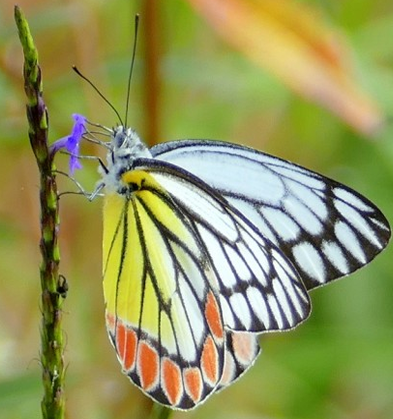
Lace Wing
Cethosia nietneri
A butterfly known for its distinctive flight style, which varies depending on its altitude. When flying low to the ground, it has a slow and labored flight, often flapping its wings with deliberate effort. However, when it ascends to greater heights, its flight takes on a more regal, graceful quality, as it glides through the air with an almost majestic float.
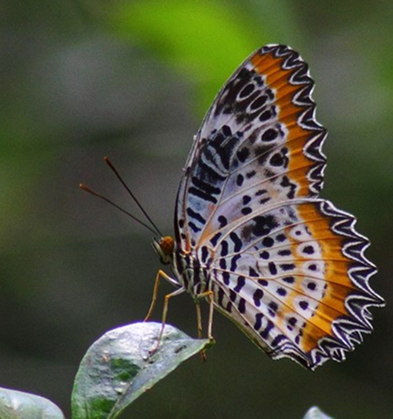
Slate Flash
Rapala manea
A fairly common and widespread butterfly species, found throughout Sri Lanka. It is especially abundant at moderate elevations, where it frequents gardens, forest edges, and lightly wooded areas. This small yet striking lycaenid is easily recognized by its sleek, slate-colored wings and the subtle flashes of metallic hues that catch the light during flight.
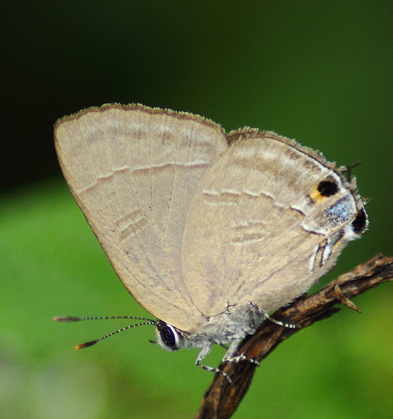
Golden Angel
Caprona ransonnettii
A distinctive butterfly species known for its bold, angular wing shape and swift, darting flight. A notable variation occurs during the dry season, when individuals exhibit a form described as A. taylorii by de Nicéville. In this seasonal morph, the butterfly’s upper side shifts from the typical dark brown to a lighter ochreous hue, giving it a more muted and sun-bleached appearance. Additionally, the discal area of the hindwing becomes relatively plain, lacking the usual group of ochreous spots and streaks seen in the wet-season form.
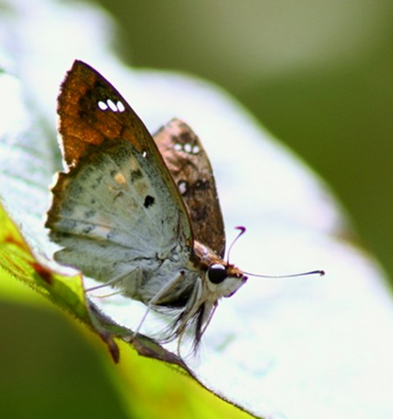
Monkey Puzzle
Rathinda amor
A charming little butterfly typically found in jungle regions that receive moderate to heavy rainfall. It thrives in dense forests and thick scrubland, where the environment provides ample cover and food sources. Although it favors the shelter of the undergrowth, it is often seen flitting along forest paths, trails, and clearings where patches of sunlight break through the canopy.
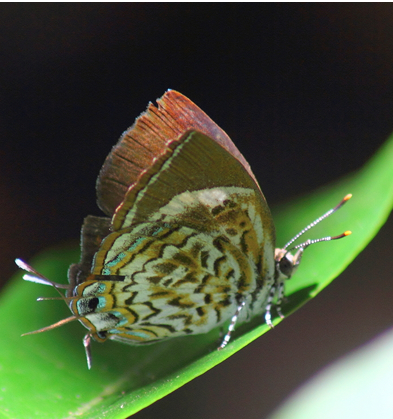
Great Eggfly
Hypolimnas bolina
A striking butterfly, well-known for its bold appearance and distinctive wing patterns. Despite its relatively large size and the seemingly calm, deliberate way it hovers over flowers while feeding, this butterfly is far from sluggish. It is particularly active during rainy weather, often seen darting between blossoms in search of nectar. While it may appear docile and unhurried during these moments, especially when settled on flowers, it reacts swiftly when disturbed, beating a rapid retreat into the surrounding vegetation.
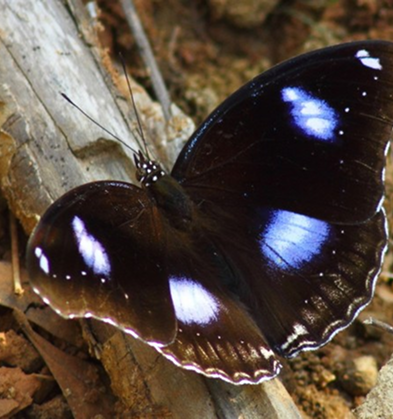
Purple Leaf Blue
Amblypodia anita
A beautiful and subtly striking butterfly, easily recognized by the rich coloration of its wings. The upper side is a deep, dark purple, elegantly bordered by a distinct black marginal band that accentuates its sleek appearance. In contrast, the underside of the wings displays a dark coppery brown tone, providing excellent camouflage against dried leaves and tree bark when the butterfly is at rest.
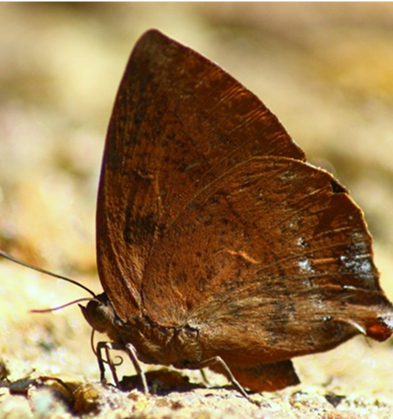
Sri Lankan Birdwing
Troides darsius
An endemic species, holds the honor of being both the national butterfly and the largest butterfly found in Sri Lanka. The male is a powerful and graceful flier, often seen gliding swiftly at considerable heights above the ground. However, it frequently descends to visit flowering plants, where it hovers and feeds on nectar with characteristic elegance. The female, larger and less swift in flight compared to the male, tends to stay even higher in the canopy, making her a more elusive sight.
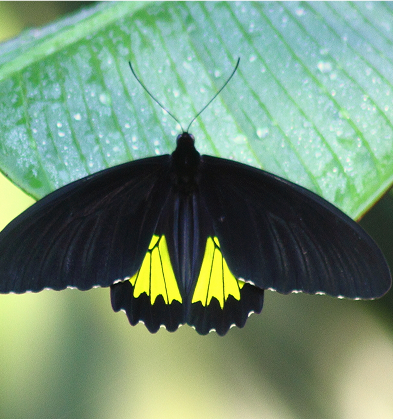
Small Salmon Arab
Colotis amata
A butterfly species that thrives in the hottest and driest regions of Sri Lanka, particularly in the two arid zones along the southeastern and northwestern coasts. This species is most commonly found in the lowland areas, where the climate is harsh and the environment is characterized by sparse vegetation and intense heat.
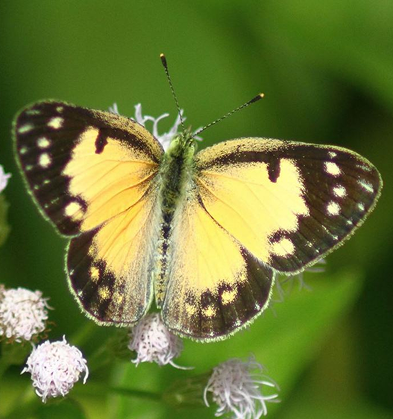
Common Palmfly
Elymnias hypermnestra
A striking butterfly known not only for its beautiful, understated markings but also for its distinctive and somewhat bold behavior. One of its most notable habits is its inquisitive nature. This butterfly is frequently seen hovering around its territory, often intercepting other butterflies that dare to enter its space. It doesn’t hesitate to chase off intruders, a behavior that can sometimes seem rather annoying to its fellow species.
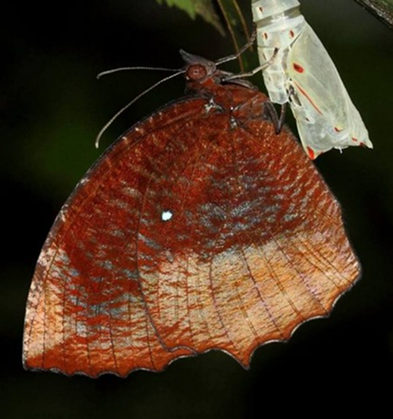
Commander
Moduza procris
A somewhat elusive butterfly that is not easily spotted in the wild unless specifically attracted to bait, which it seems to have a particular fondness for. It is most commonly found resting on the ground, where it exhibits a distinctive behavior of gently flapping its wings, often while blending seamlessly with the surrounding leaf litter.
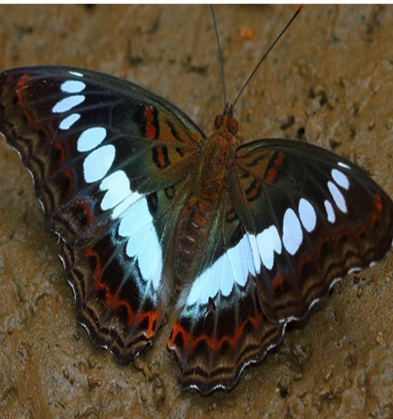
Common Tiger
Papilio crino
One of the most familiar and widely seen butterflies in Sri Lanka. As a member of the “Crows and Tigers,” it belongs to the Danainae subfamily within the Brush-footed butterflies (Nymphalidae). Known for its striking orange and black patterned wings, the Common Tiger is a frequent sight in both rural and urban landscapes, where it flits gracefully through gardens, fields, and forests. Its strong, agile flight and distinctive coloration make it easily recognizable.
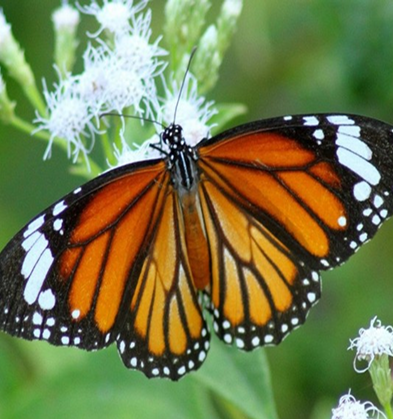
Angled Castor
Ariadne ariadne
A striking species of nymphalid butterfly found in Sri Lanka, renowned for its unique and angular wing patterns. The butterfly’s wings display a combination of earthy browns and rich oranges, with distinctive white markings that form sharp, angular shapes—hence the name “Angled Castor.” These markings, along with the butterfly’s characteristic flight patterns, make it easily recognizable in its natural habitat.
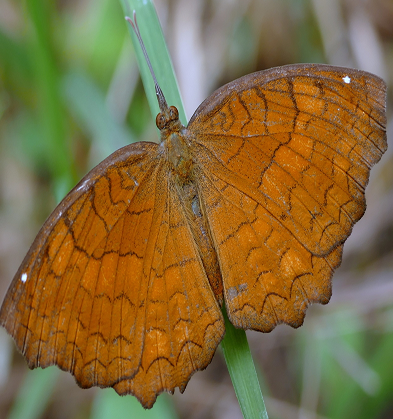
Grizzled Skipper
Spialia galba
A swift and agile hesperiid butterfly, commonly found across Southeast Asia, including throughout Sri Lanka. Known for its rapid, darting flight, this butterfly is often observed zipping through open spaces, particularly in areas with abundant sunlight. The Grizzled Skipper has a preference for flying among herbaceous plants, where it can be seen flitting quickly between patches of vegetation, always on the move.
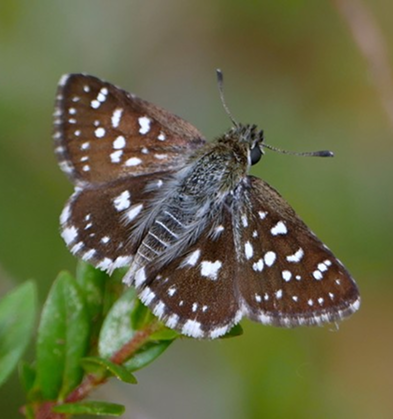
Blue Mormon
Papilio polymnestor
The second-largest butterfly in Sri Lanka, a truly magnificent species that commands attention with its size and vibrant colors. The male Blue Mormon is particularly striking, with bright, iridescent blue hues on the upper side of its wings, a shade that is more vivid than the female’s somewhat subdued coloration. One of the butterfly’s favorite nectar sources is the Clerodendrum flower, where it can often be seen feeding, its striking colors standing out against the lush greenery.
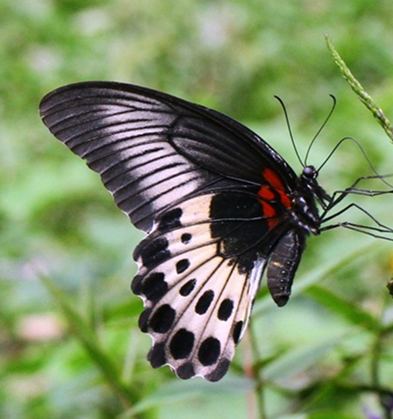
Common Sailor
Neptis hylas
The more widespread and commonly encountered of the two Neptis species found in Sri Lanka. Easily identifiable by its distinctive wing patterns, the Common Sailor is characterized by three distinct parallel bands on the upper side of its wings, a feature that helps differentiate it from the similar Neptis jumbah. These bands are typically white or light-colored, contrasting sharply against the dark background of the wings, giving the butterfly a striking appearance.
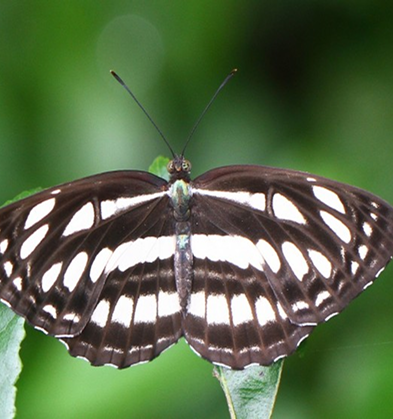
Sri Lankan Hedge Hopper
Baracus vittatus
An endemic butterfly found primarily in the hill country, though it can also be observed in certain lowland areas. Belonging to the Hesperiidae family, this butterfly is a member of the skipper group, known for its quick and darting flight. The wings of the Sri Lankan Hedge Hopper feature a yellowish-brown background on the underside, which is complemented by a pale yellow line running along the hindwing, making it easily distinguishable from other species in its family.
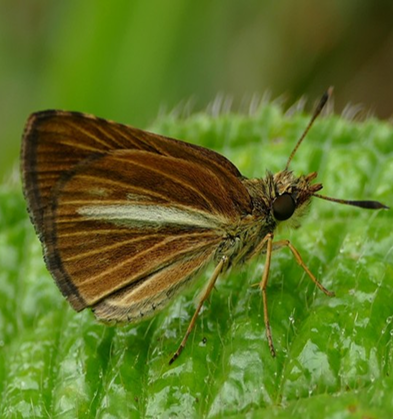
Sri Lankan Lesser Albatross
Appias galena
An endemic butterfly belonging to the Pieridae family, native to Sri Lanka. This butterfly is particularly distinguished by the concave outer margin of its forewings, a feature that sets it apart from similar species, such as the Common Albatross. Additionally, the anal angle of the forewing is more curved, lending the butterfly a unique shape.
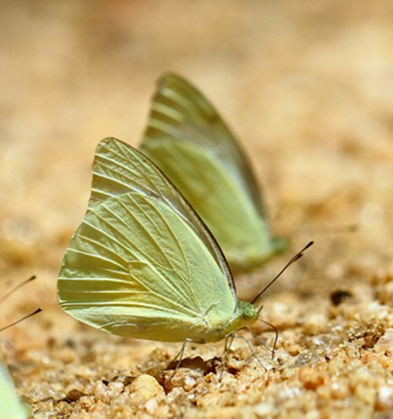
Indian Sunbeam
Curetis thetis
A striking butterfly known for its distinctive colorations and subtle markings. The underside of its wings is snow white, often with occasional obscure markings that add a layer of subtle beauty. The male of the species is particularly eye-catching, with its shiny orange-red upper wings that shimmer in the sunlight, creating a vivid contrast to its pale underside
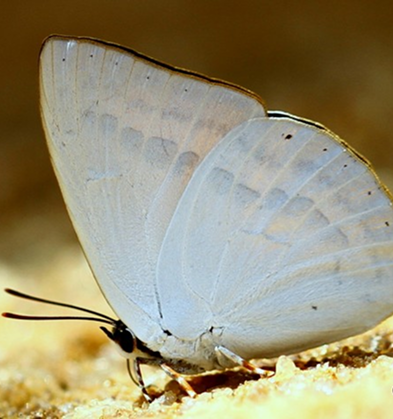
Pea Blue
Lampides boeticus
A small yet widespread butterfly found throughout Sri Lanka, inhabiting open areas across all elevations. This butterfly is particularly common in regions with overgrown vegetation, where its delicate blue wings blend in with the surrounding flora. It is a year-round resident of the island, regularly seen in gardens, grassy fields, and along forest edges, where it flits gracefully from plant to plant in search of nectar.
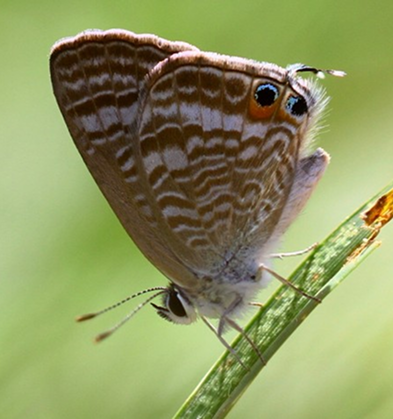
Common Cerulean
Jamides celeno
A small but striking butterfly commonly found throughout Sri Lanka. One of its most distinctive features is the submarginal rows of streaks that adorn both wings, adding a delicate pattern to its otherwise simple appearance. The forewings are characterized by paired lines that are almost straight and continuous, giving the butterfly a sharp, defined look.
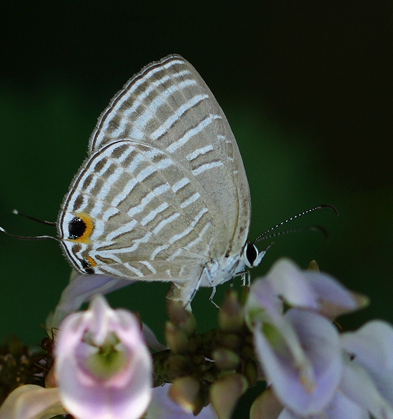
Common Silverline
Spindasis vulcanus Fabricius
Easily distinguishable from other similar species, primarily due to its small size, making it the tiniest among them. Despite its diminutive stature, the butterfly possesses distinct features that set it apart. On the underside of the hindwings, a notable characteristic is the central band, which is more widely spaced from the outer band compared to other species, giving it a unique and recognizable pattern.
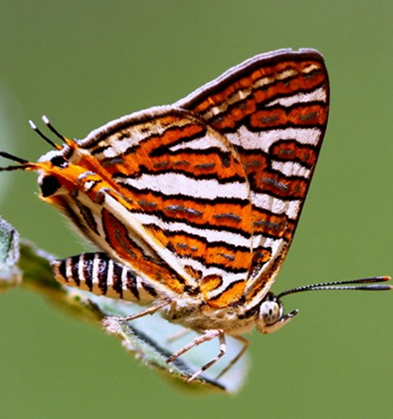
Chocolate Soldier
Junonia iphita
A common butterfly found throughout Sri Lanka. This species is easily recognizable by its rich, chocolate-brown wings adorned with eye-catching patterns and markings. Known for its territorial nature, individuals of this species tend to defend a specific area, often remaining close to ground level. They are frequently seen basking in the sun, where their wings are spread wide, absorbing warmth to maintain their energy levels.
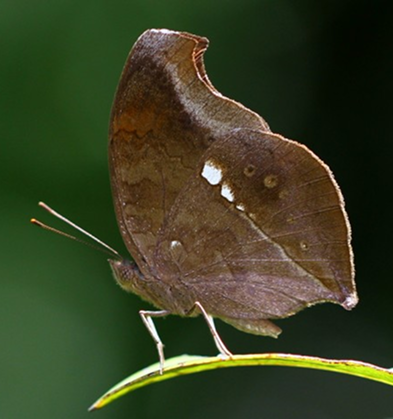
Sri Lankan One-Spot Grass Yellow
Eurema ormistoni
A strikingly bright yellow butterfly that is endemic to Sri Lanka. Its vivid yellow coloration makes it easily recognizable, though it features minimal markings on the underside of its wings, which are mostly a pale, subtle shade. This butterfly distinguishes itself from other species in the Grass Yellow group by the unique curved tornus of the forewing, giving it a rounder and more compact appearance compared to its relatives.
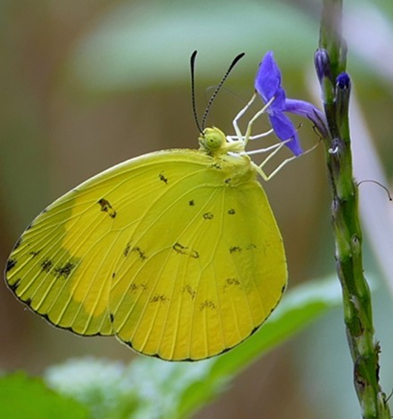
Common Castor
Ariadne merione
A fascinating butterfly that is typically found in close proximity to its host plants, where it spends the majority of its time. This butterfly has a strong attachment to the plants it depends on, often remaining near them throughout its life cycle. It is commonly seen perched on leaves or twigs, waiting quietly. When disturbed, the Common Castor displays an interesting behavior—rather than fleeing far away, it typically circles the area before returning to its original perch.
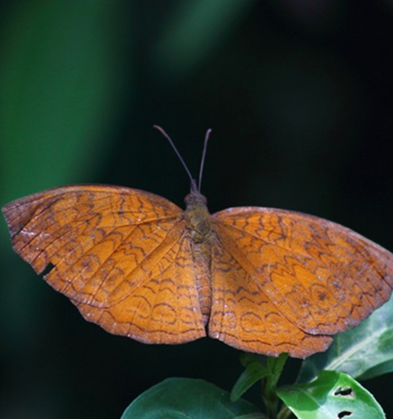
Angled Pierrot
Caleta decidia
A small, delicate butterfly that shows a strong preference for jungles and other wooded areas, where it finds shelter and suitable feeding spots. Unlike many other species, it is not an enthusiastic mud-puddler and is seldom observed in wide open spaces. Instead, it tends to stay closer to the ground, fluttering with quick, low flights through shaded paths and undergrowth.
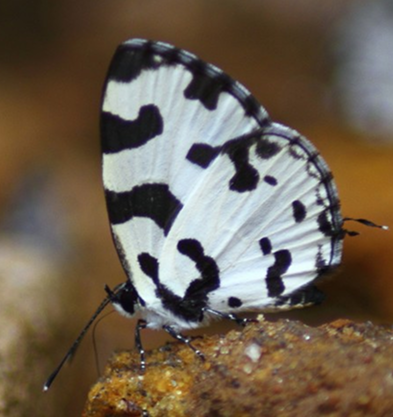
Grass Jewel
Freyeria putli
Holds the distinction of being the smallest butterfly species in Sri Lanka, making it a delicate and fascinating sight to behold. Despite its small size, it has an intriguing and subtle beauty. On the upper side, the butterfly is a purplish-brown color, with a soft, almost iridescent sheen. Its wings are adorned with faint, indistinct tornal spots, which, although not overly prominent, contribute to its unique appearance.
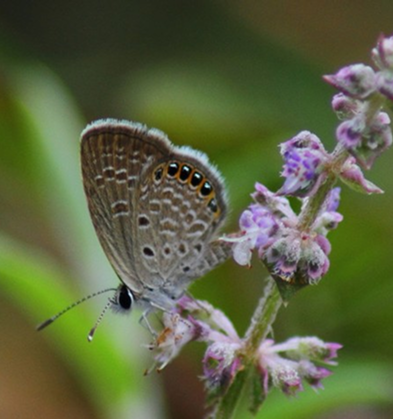
Gladeye Bushbrown
Mycalesis patnia
A distinctive butterfly easily recognized by the large, prominent “eye spot” on the underside of its forewing. This eye spot is surrounded by a pale yellow outer ring, making it a standout feature among other bushbrown species. Typically, the butterfly’s wings are a muted brown, which helps it blend seamlessly with the forest floor or undergrowth.
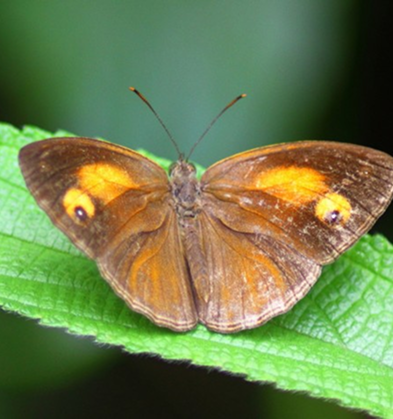
Metallic Cerulean
Jamides alecto
A small yet striking butterfly, known not only for its beauty but also for its reputation as a cardamom pest. This butterfly can often be found in plantations and gardens where cardamom is cultivated, as its larvae feed on the plants. When encountered in the wild, the Metallic Cerulean is typically seen in groups, often flying in the company of others of its kind, creating a delicate spectacle as they flit from one spot to another.
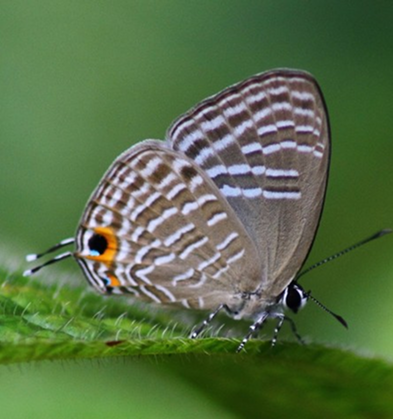
Great Crow or King Crow
Euploea phaenareta
A robust and striking butterfly characterized by its dark brown wings and distinctly larger size compared to other species in the Euploea genus. The wings feature subtle yet distinctive markings, with the submarginal spots on the hindwings being notably smaller than those found on other Crow species. This gives it a somewhat more understated appearance, despite its size.
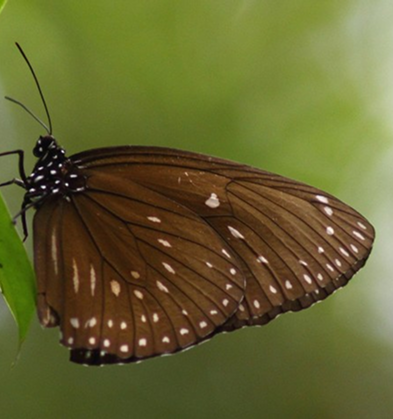
Common Banded Demon
Notocrypta paralysos
A striking butterfly, notable for its distinct banding patterns on both the upper and underside of its wings. On the underside of the forewings, a prominent median band extends all the way to the upper margin, creating a continuous, bold stripe that contrasts against the rest of the wing. In contrast, on the upper side, the same band appears but stops halfway along the upper margin, giving it a more incomplete and segmented appearance.
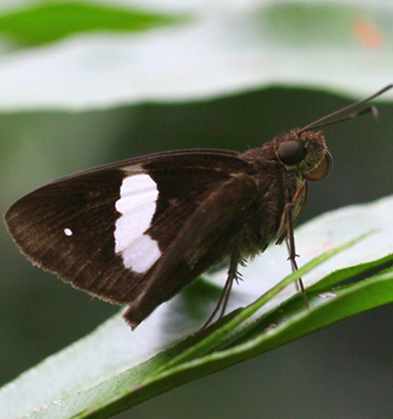
Painted Sawtooth
Prioneris sita
A striking butterfly that bears a close resemblance to the Common Jezebel, yet it can be distinguished by a few key features. The orange patches along the outer margin of the hindwings are rectangular in shape, which sets it apart from similar species with more irregular or crescent-shaped markings. Additionally, the patches at the apex of the forewings are sometimes yellow, adding another layer of distinction.
